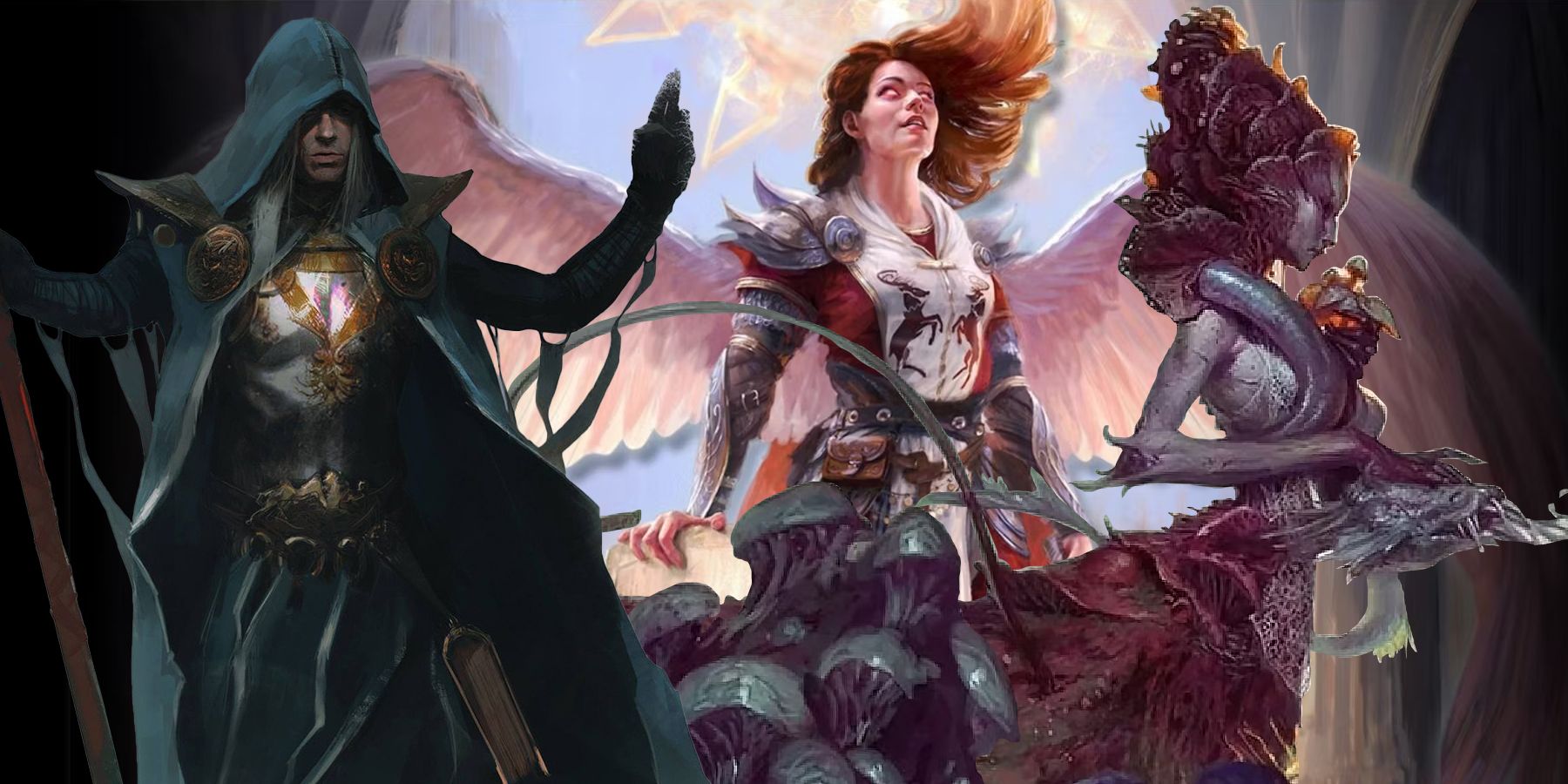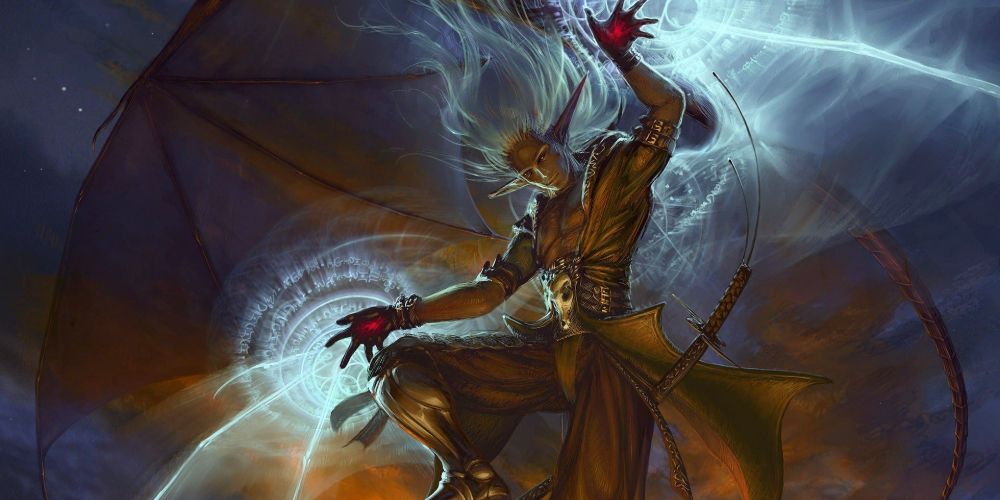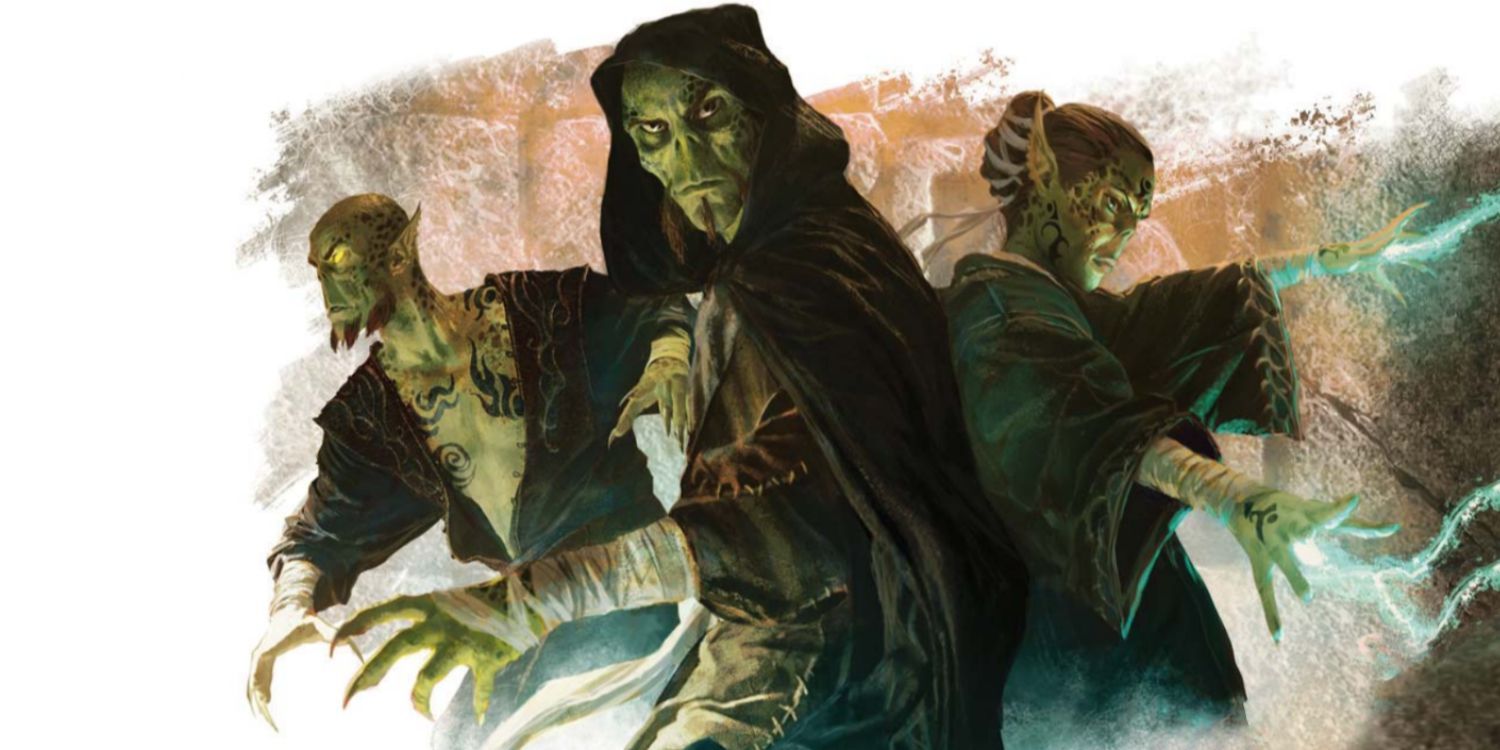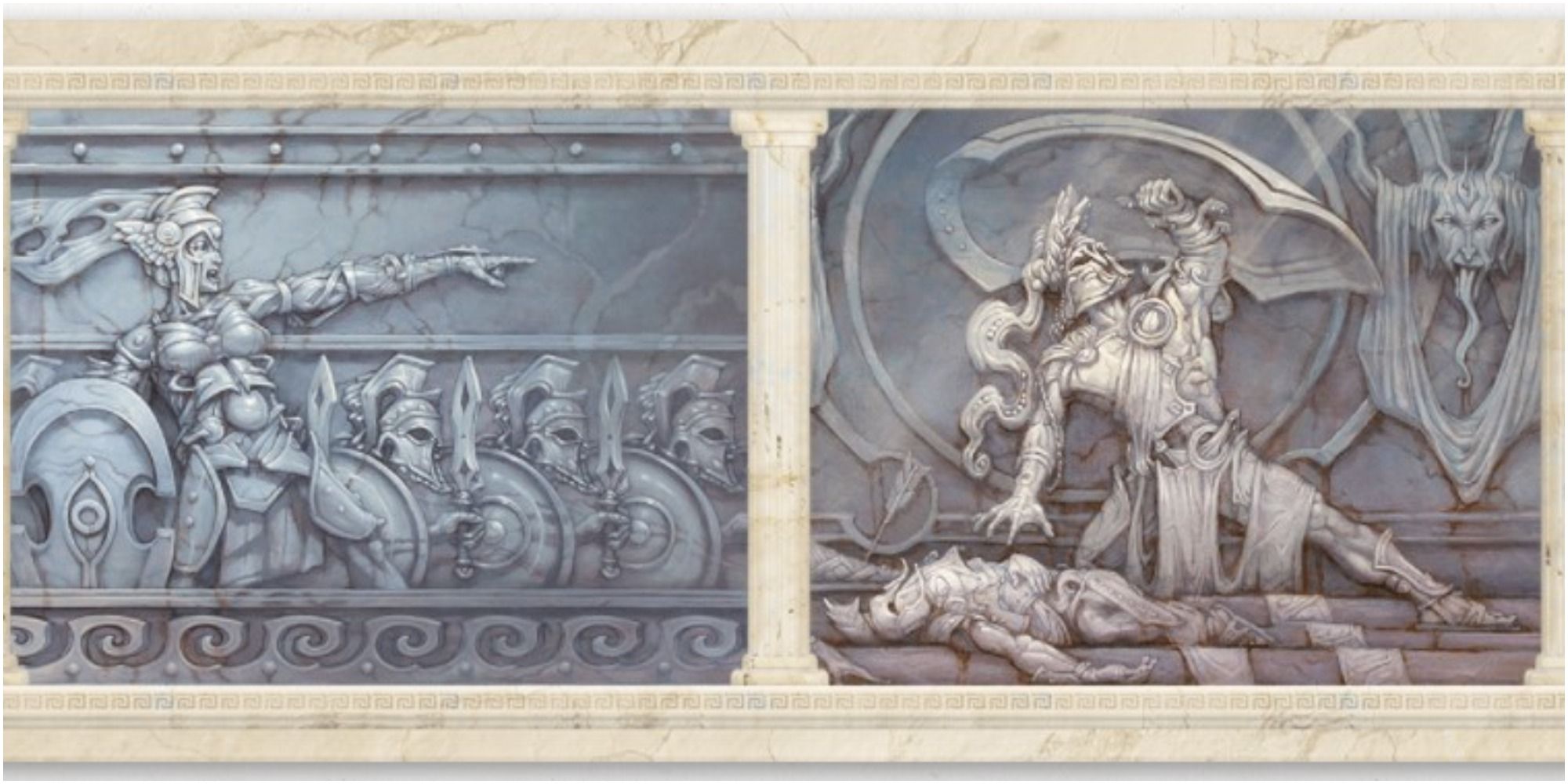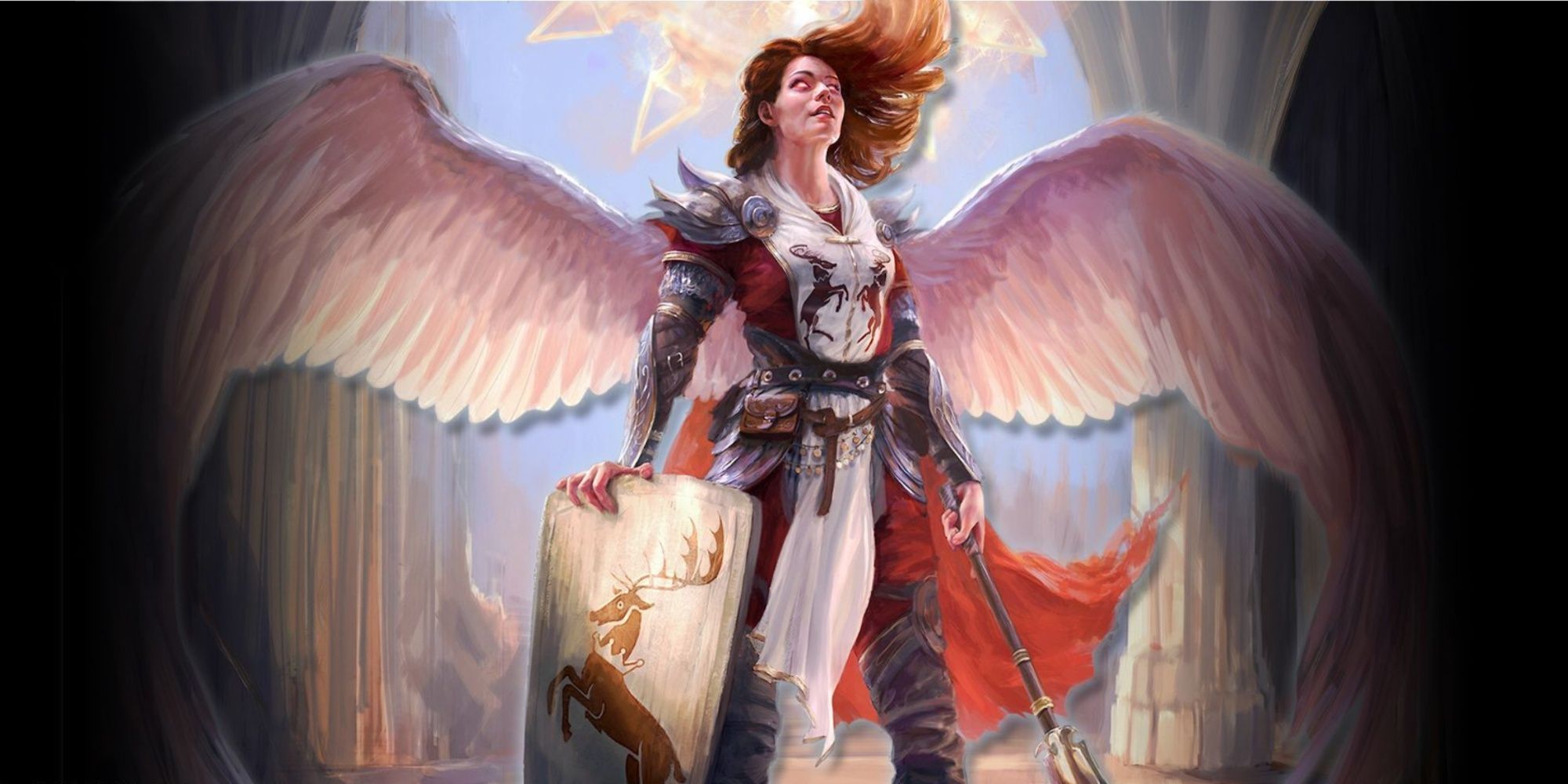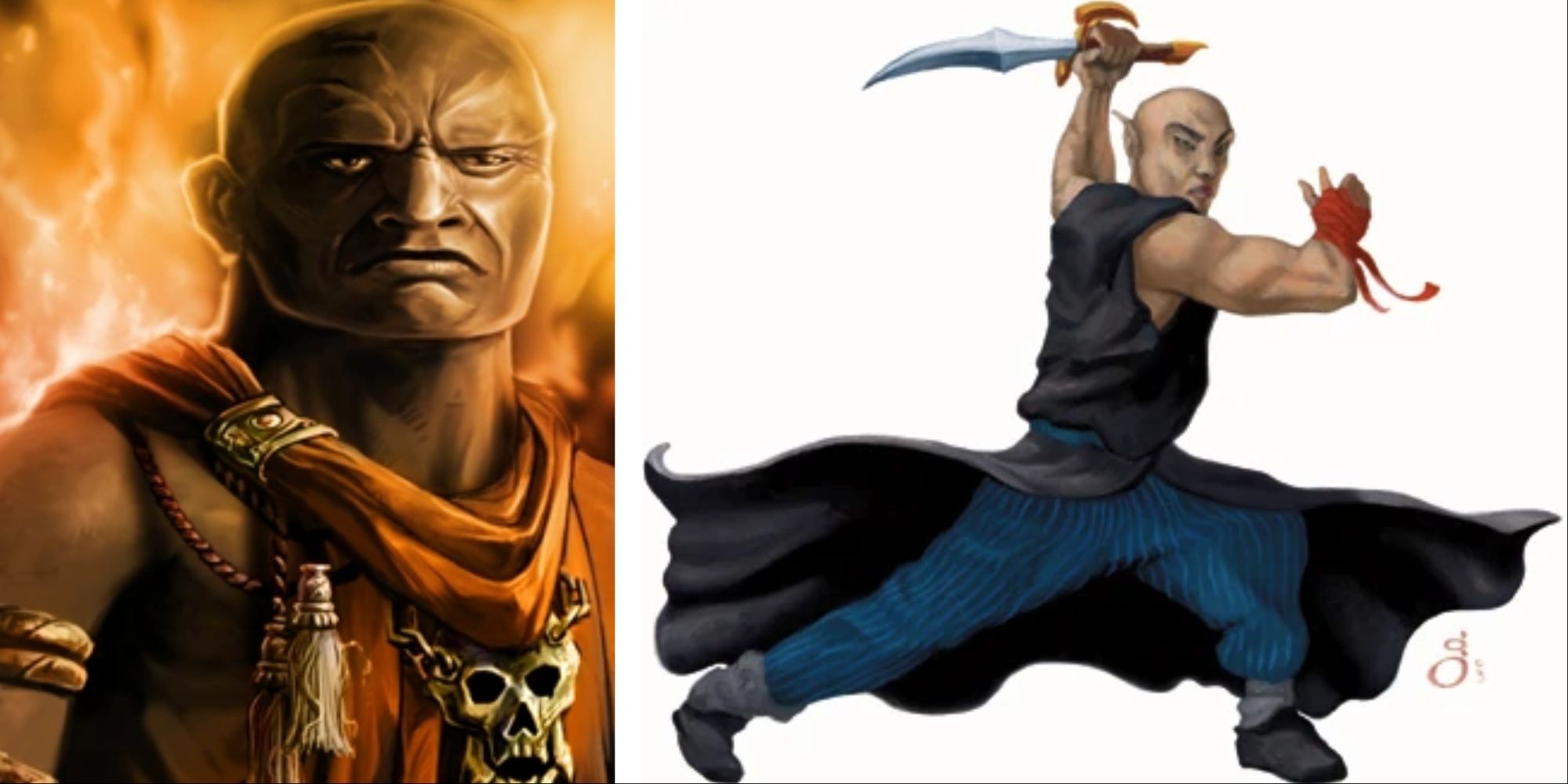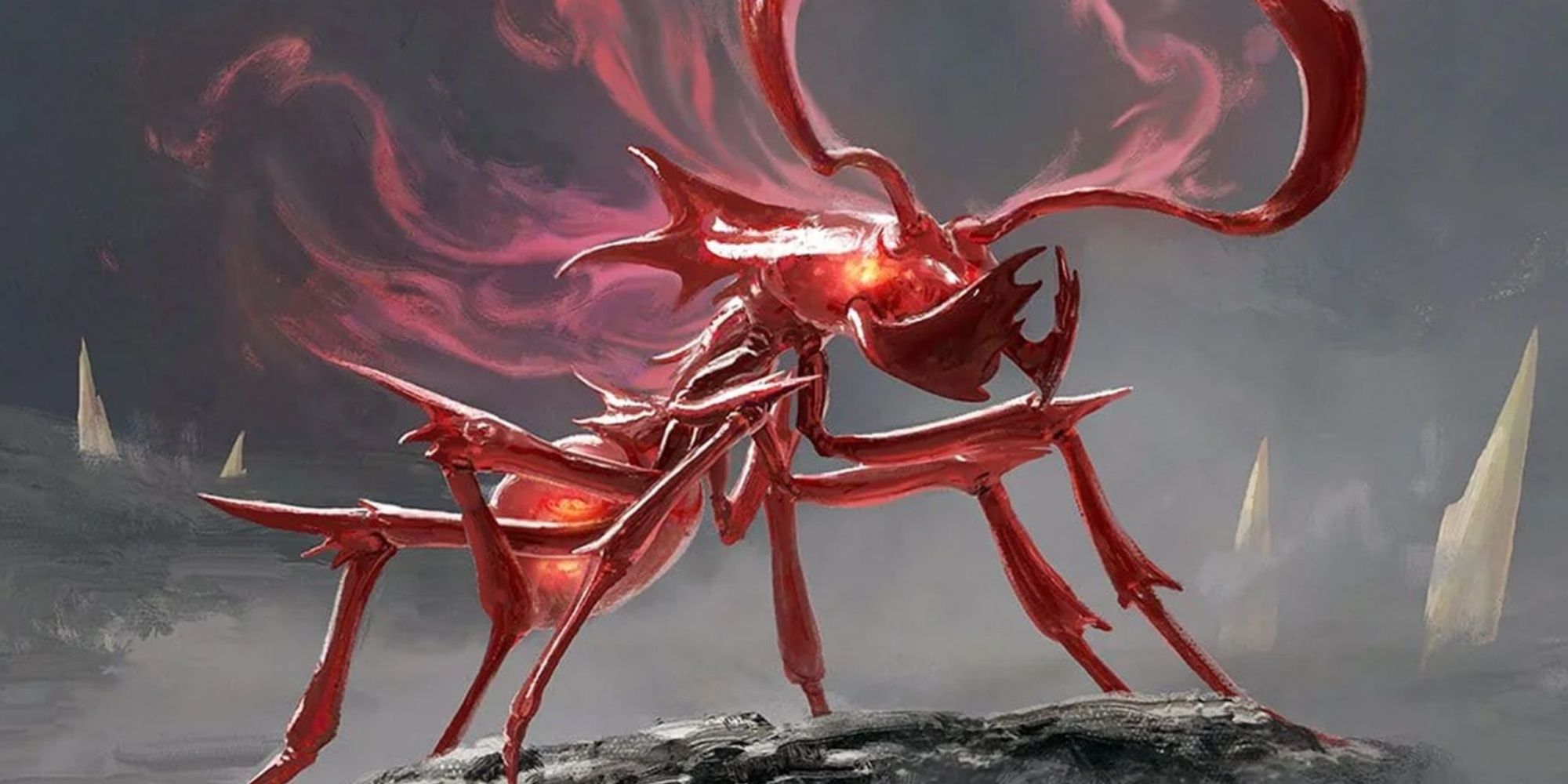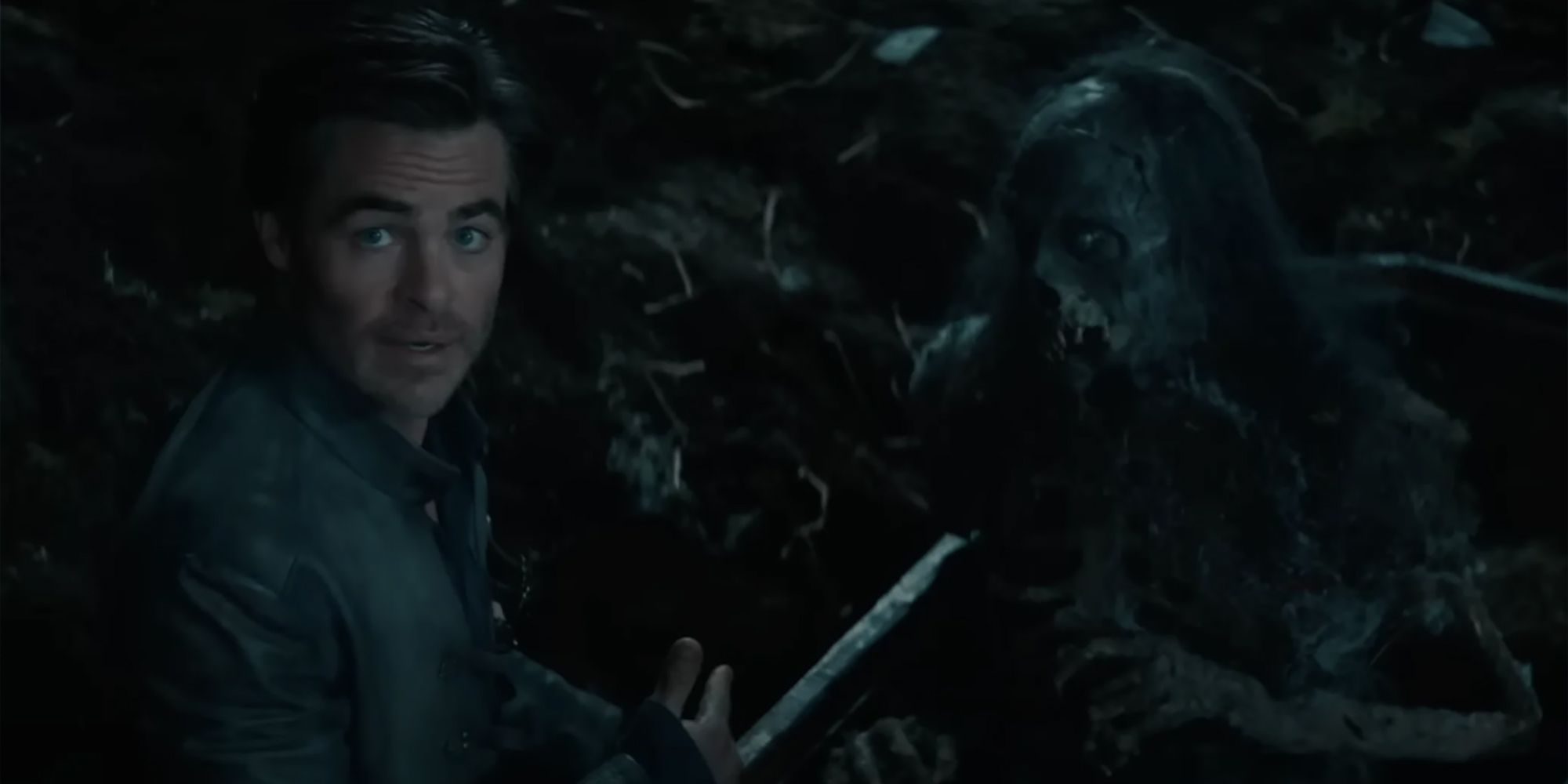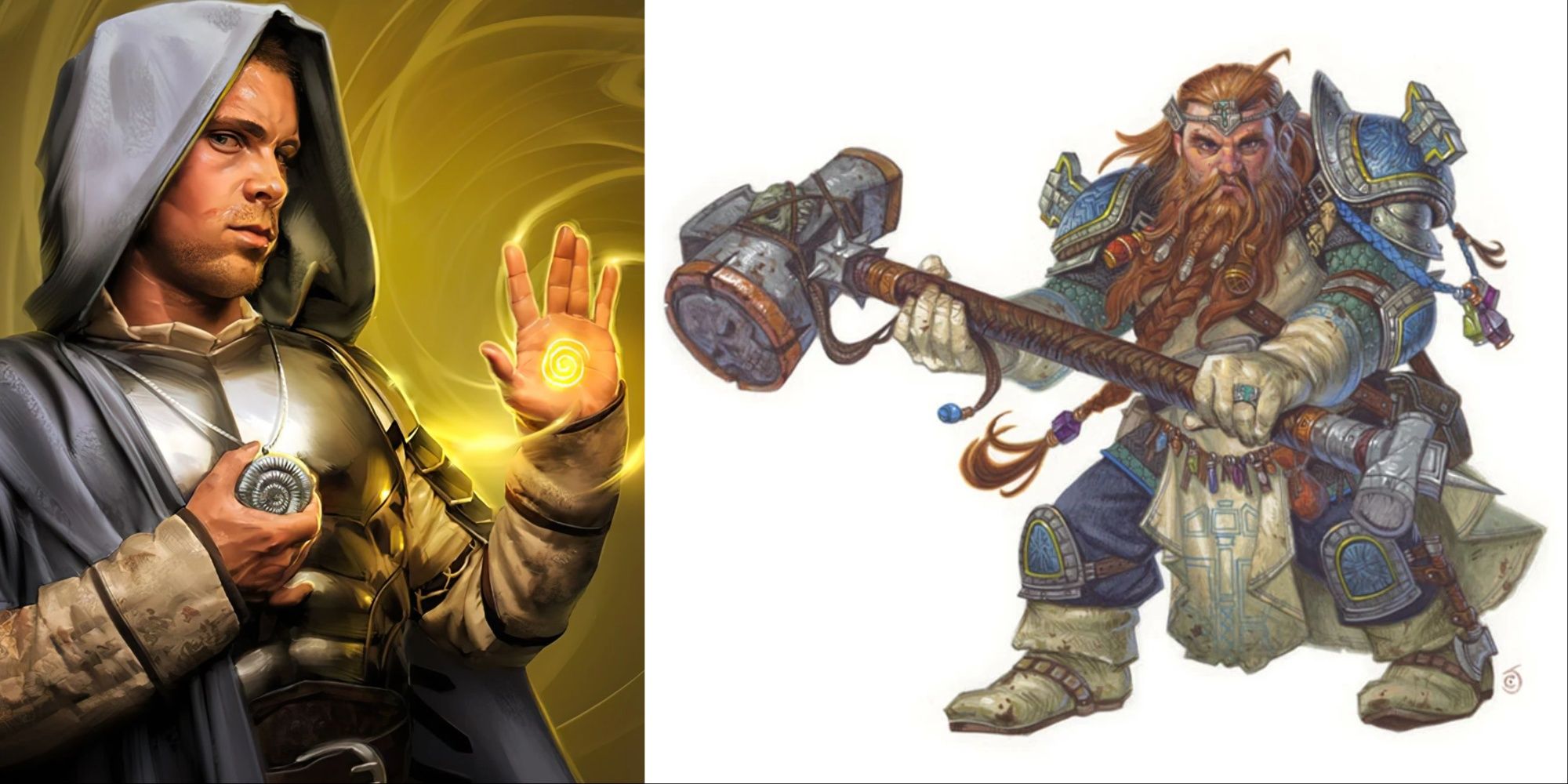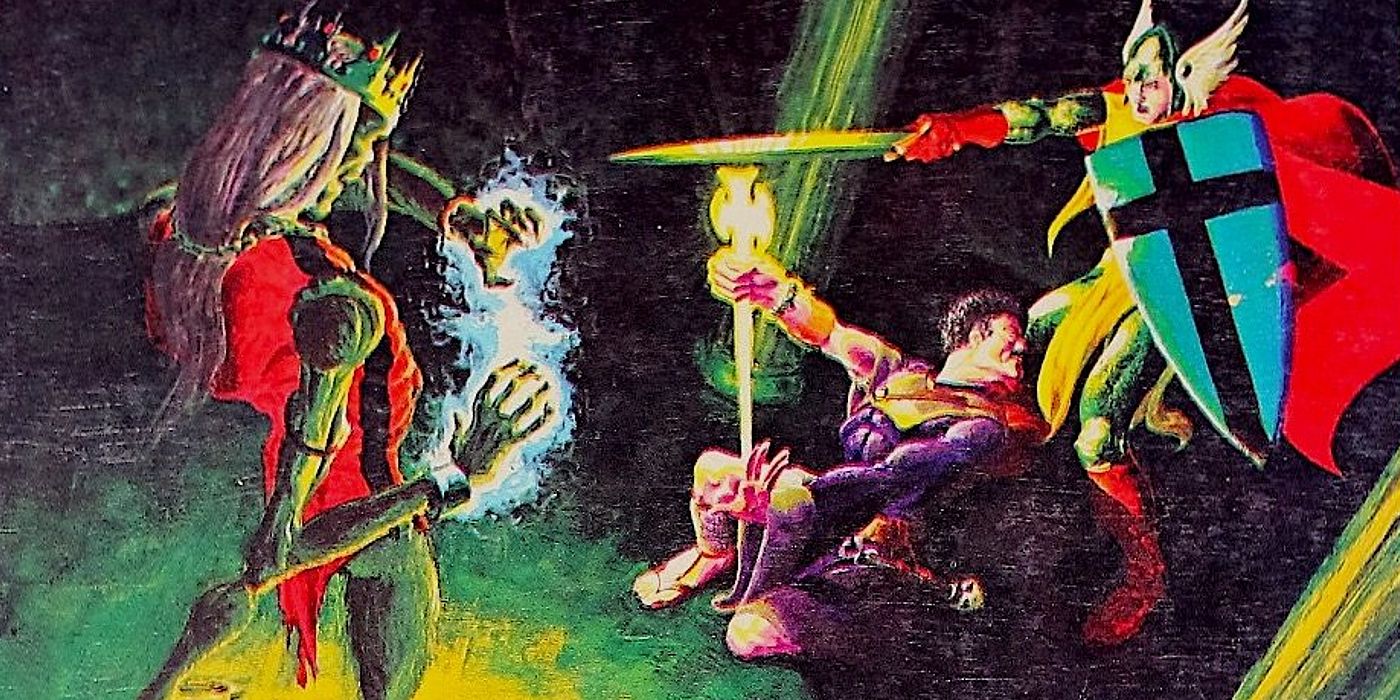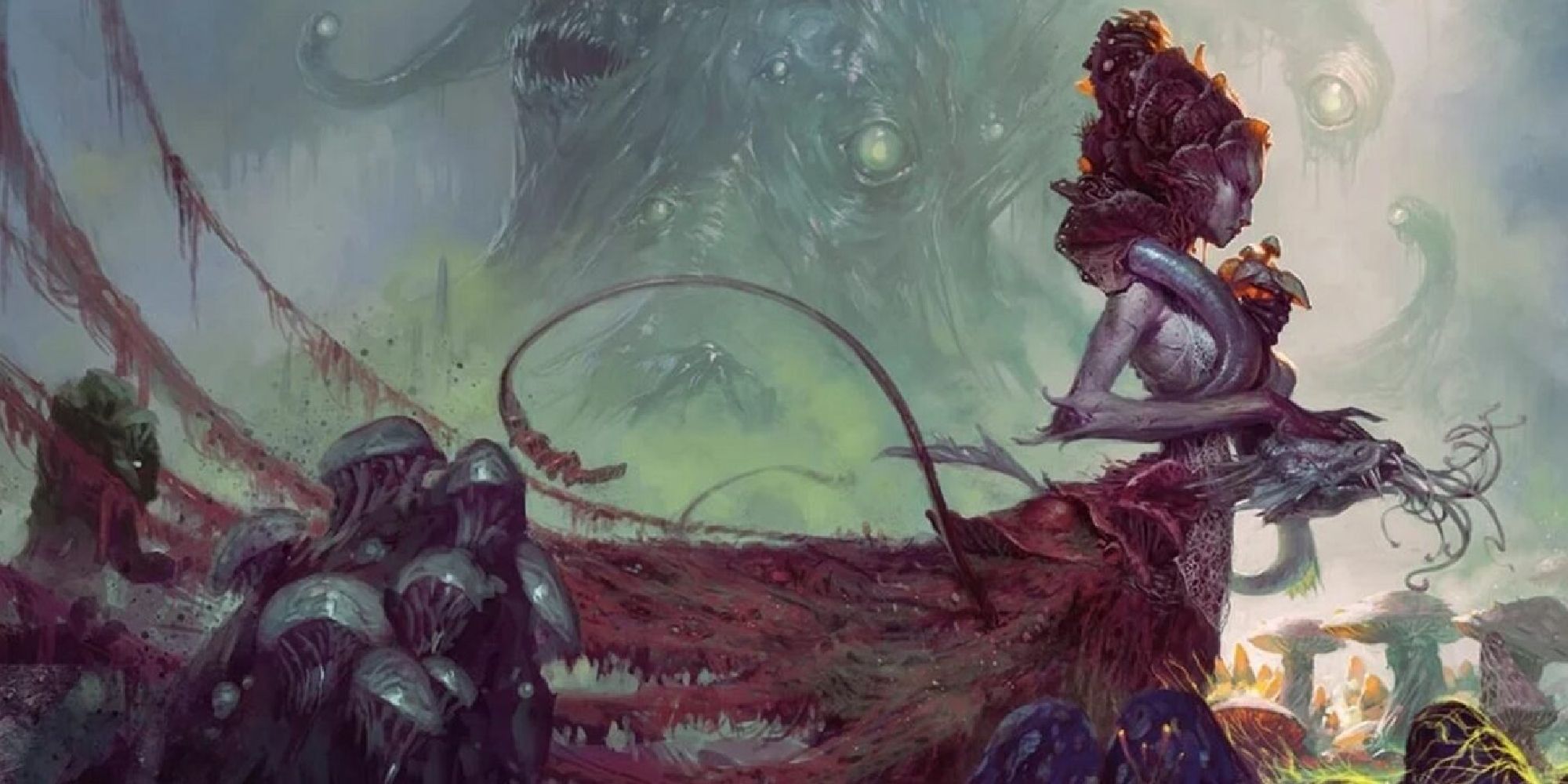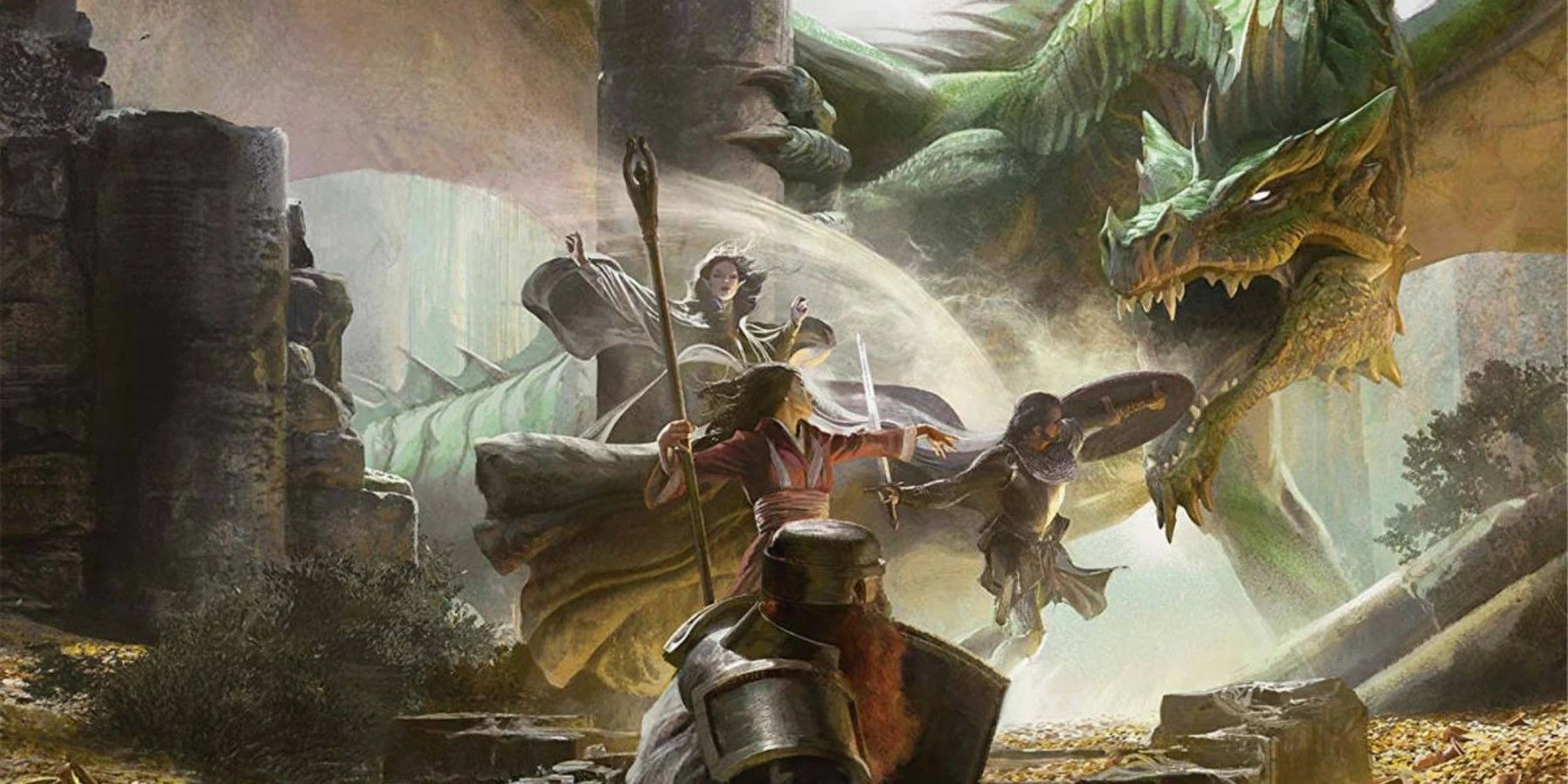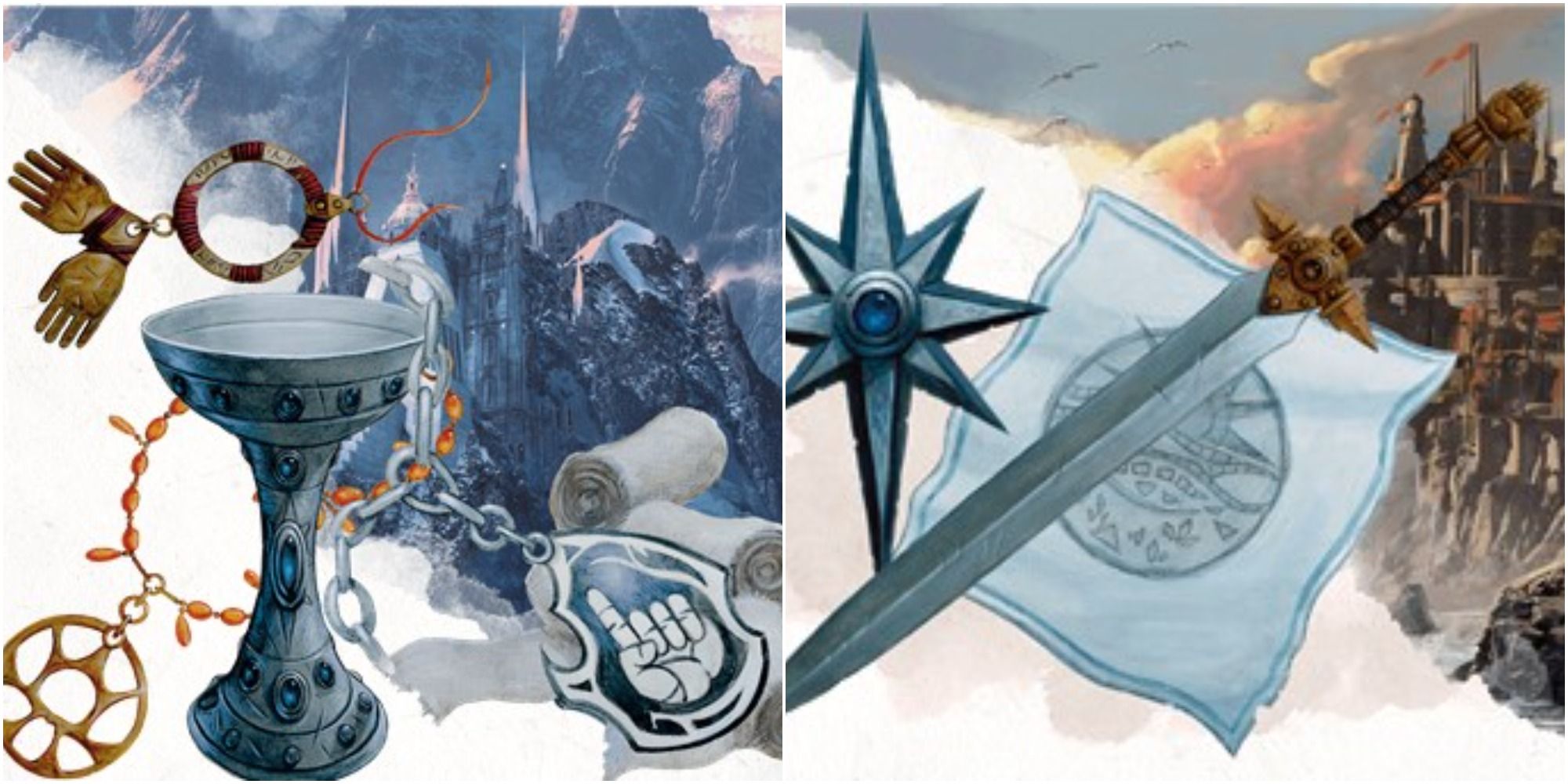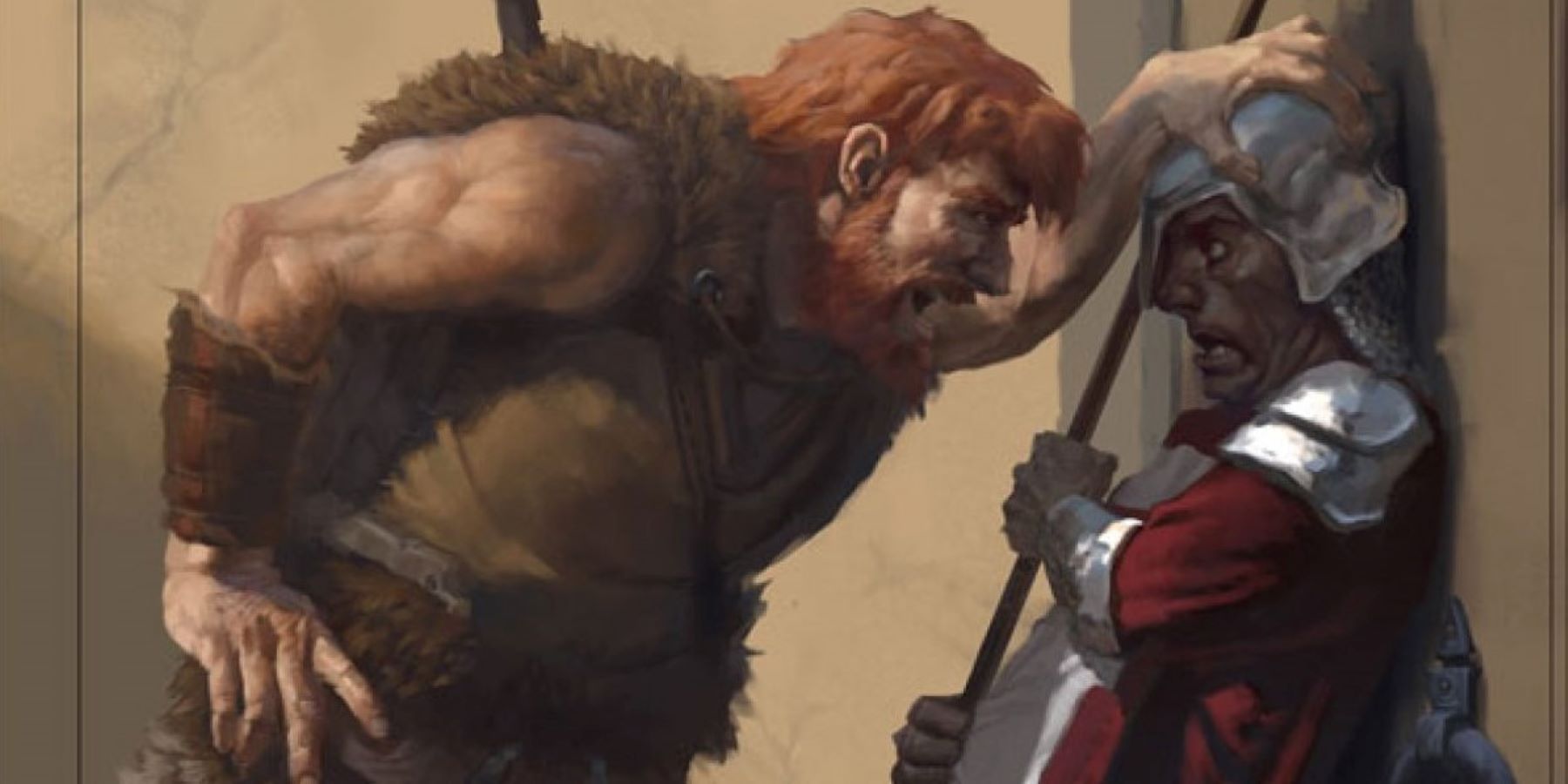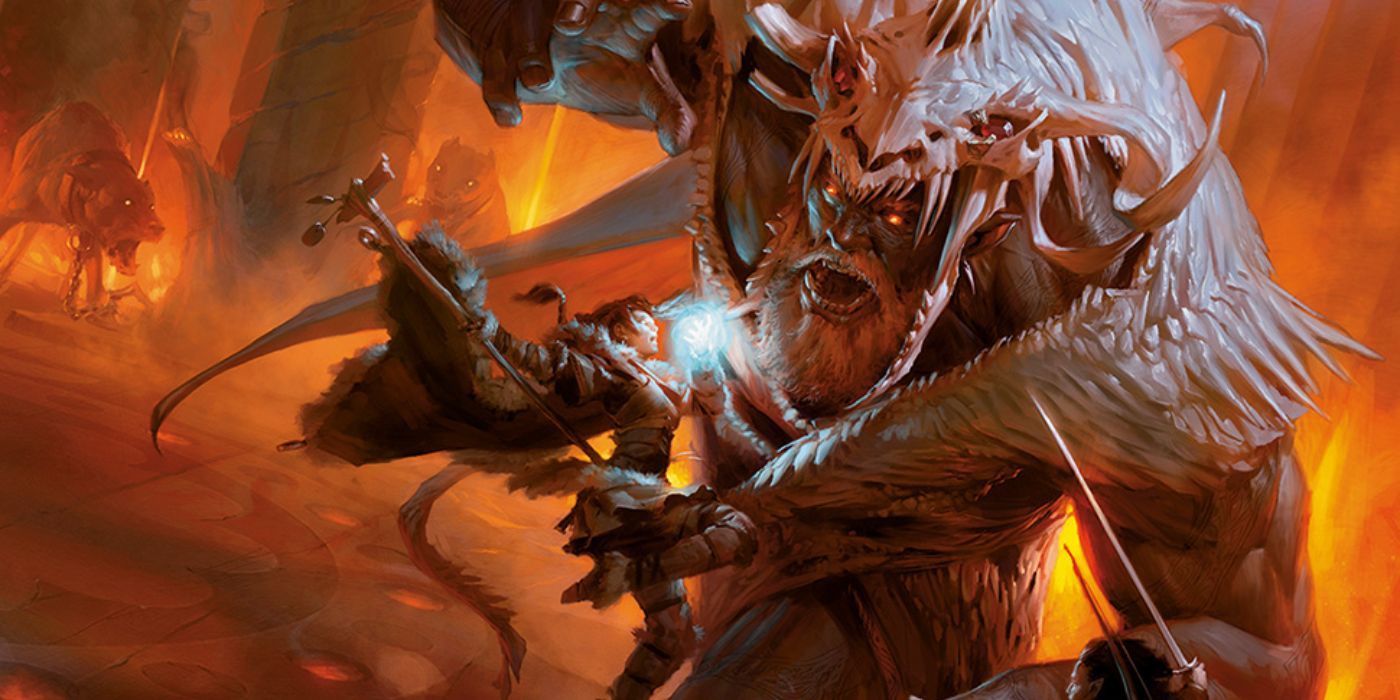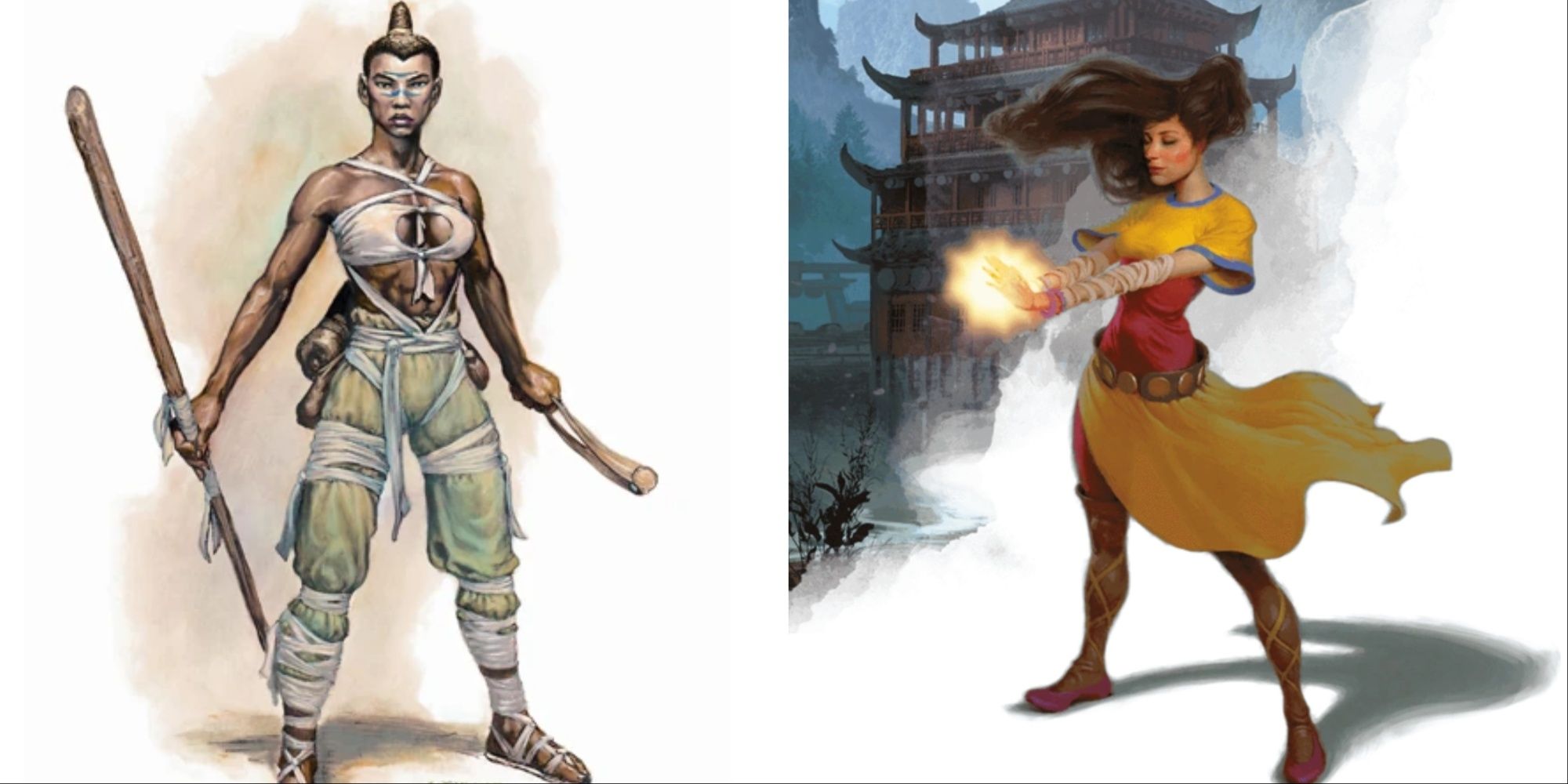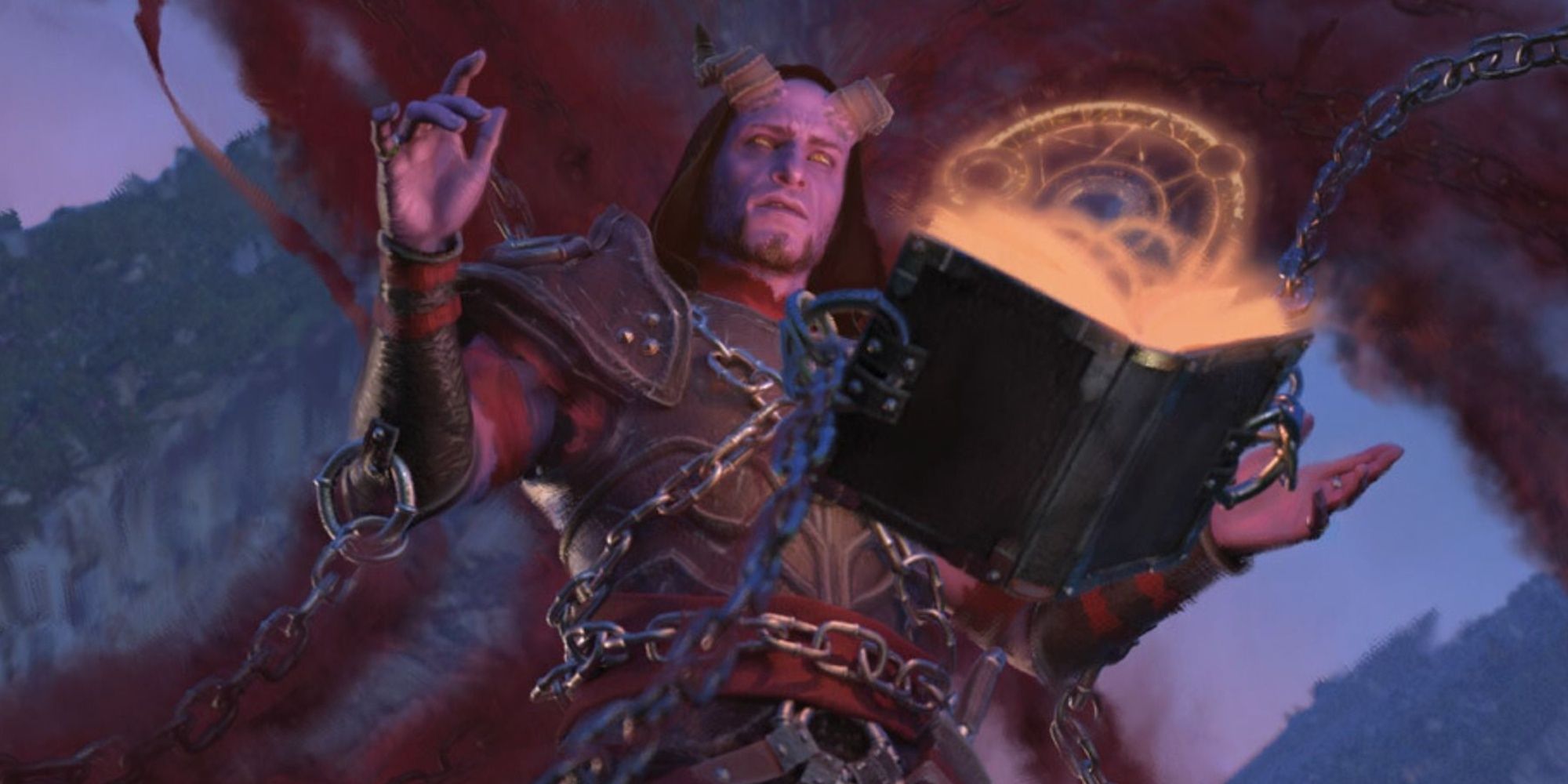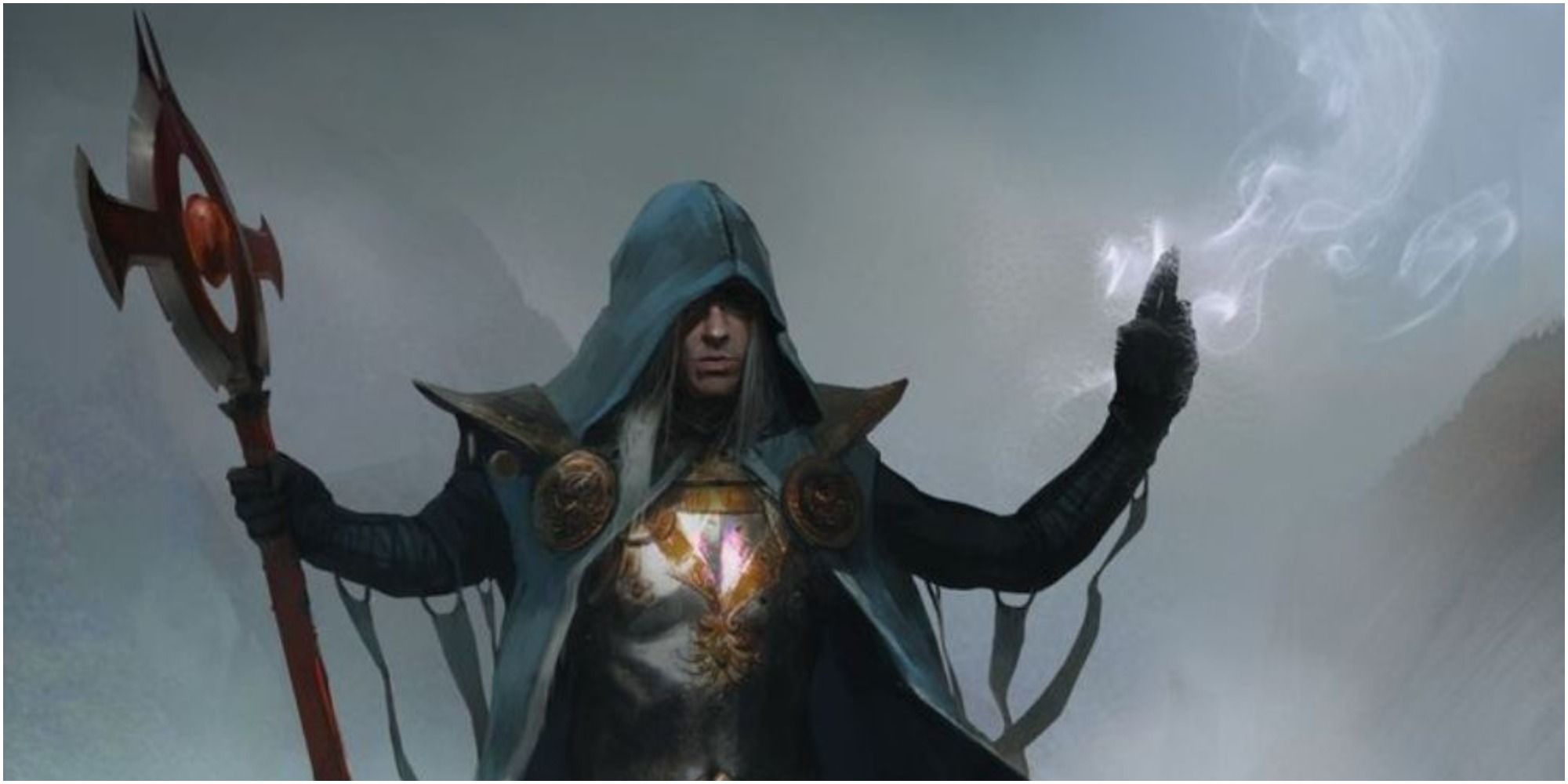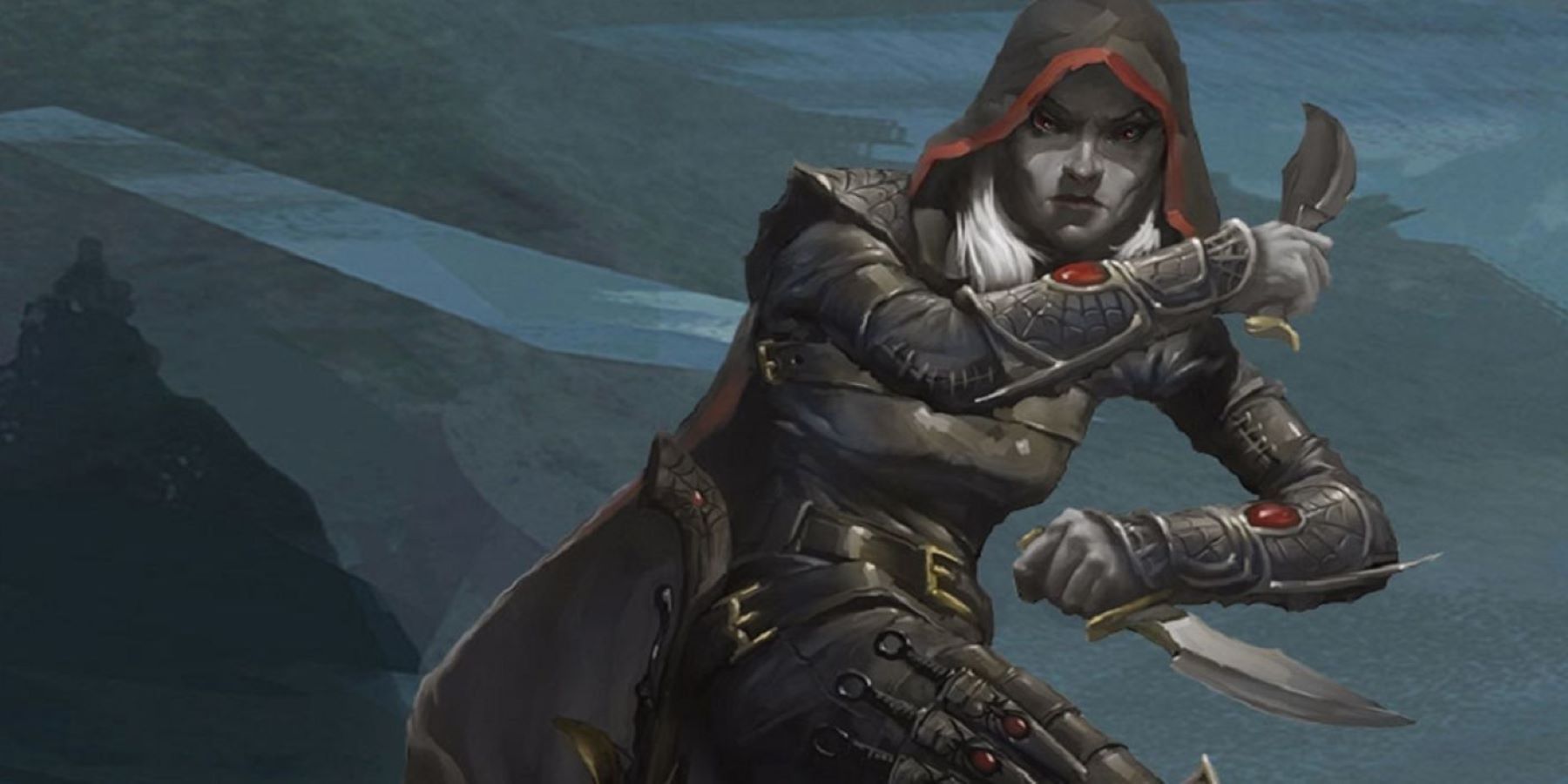The word "subclass" in Dungeons & Dragons is a versatile term. It can refer to a character that's dual- or multi-classed, one that has a trait or skill that makes them unique, or maybe they're an adherent of a mysterious school of spellcraft or spiritual discipline. Others are homebrews or just creative twists on existing D&D rules.
In the early days of D&D, there were fewer classes, and roleplaying was less sophisticated. Thanks to the variety of supplemental materials available with the release of 5e, there's a whole selection of character subclasses for players to experience. These choices exist outside the Player's Handbook but are still considered official subclasses as opposed to the results of a homebrew or theory-craft session.
Updated February 16, 2024, by Kristy Ambrose: D&D keeps its gaming world fresh by adding more options for players to build their characters. Some of the most popular and interesting examples of the best D&D subclasses come from various expansions and adventure modules. As the already impressive Wizards of the Sword Coast library continues to grow, so do the options players have when it comes to controlling even the smallest and most intricate details of their protagonists. The following are some of the best subclasses for 5e that players can find outside of the usual Player's Handbook, but within the updated rules of D&D 5e.

19 Pro Tips To Create A Cyberpunk D&D Campaign
While waiting for Cyberpunk 2077 to be released, here are 10 tips for putting together a cyberpunk Dungeons & Dragons campaign.18 Sorcerer: Storm Sorcery
Sword Coast Adventurer's Guide
- Party Role: Damage
- Main Spells/Abilities: Tempestuous Magic, Storm Guide
The Storm Sorcerer might be a combination of the base Sorcerer with the Tempest subclass of the Cleric, but this subclass is all damage and follows the strict rules regarding AC that other spellcasters typically follow. There's not a lot of versatility when it comes to this subclass, but what it lacks in creativity it makes up for in sheer power.
As the name suggests, this subclass allows a Sorcerer control over the elements, including spells that improve mobility and defense abilities. Tempestuous Magic is available from first level, and it's essentially a sophisticated dodge. 6th level brings overpowered skills like Heart of the Storm and Storm Guide.
17 Rogue: Mastermind
Xanathar's Guide to Everything
- Party Role: Damage, Crowd Control
- Main Spells/Abilities: Specialist in disguises, manipulation, and forgery.
The Mastermind is the type of D&D subclass that can discourage or completely defuse a tense situation before anyone else has a chance to throw a punch or swing a sword. Why fight or sneak into a party when the Rogue in the party can forge invitations for anyone? This 5e subclass is also an ideal choice for the party leader or the character that speaks for the party thanks to their social charms.
The player who takes on this subclass is always going to be in a support role and should build their character accordingly. The Master of Tactics is an ability tailored to this role. An inherent skill in this subclass, it allows the Mastermind to alert their allies to favorable opportunities during combat.
16 Paladin: Oath of Glory
Mythic Odysseys of Theros
- Party Role: Defender and Support
- Main Spells/Abilities: Heroism, Peerless Athlete
The Paladin that follows the Tenets of Glory has chosen a path of legend in addition to righteous heroism. These holy knights use their Athletic prowess in melee and ranged combat in addition to knowing some impressive holy damage spells. It's perfect for those who are looking for a class that's effective both as a defender and a melee fighter.
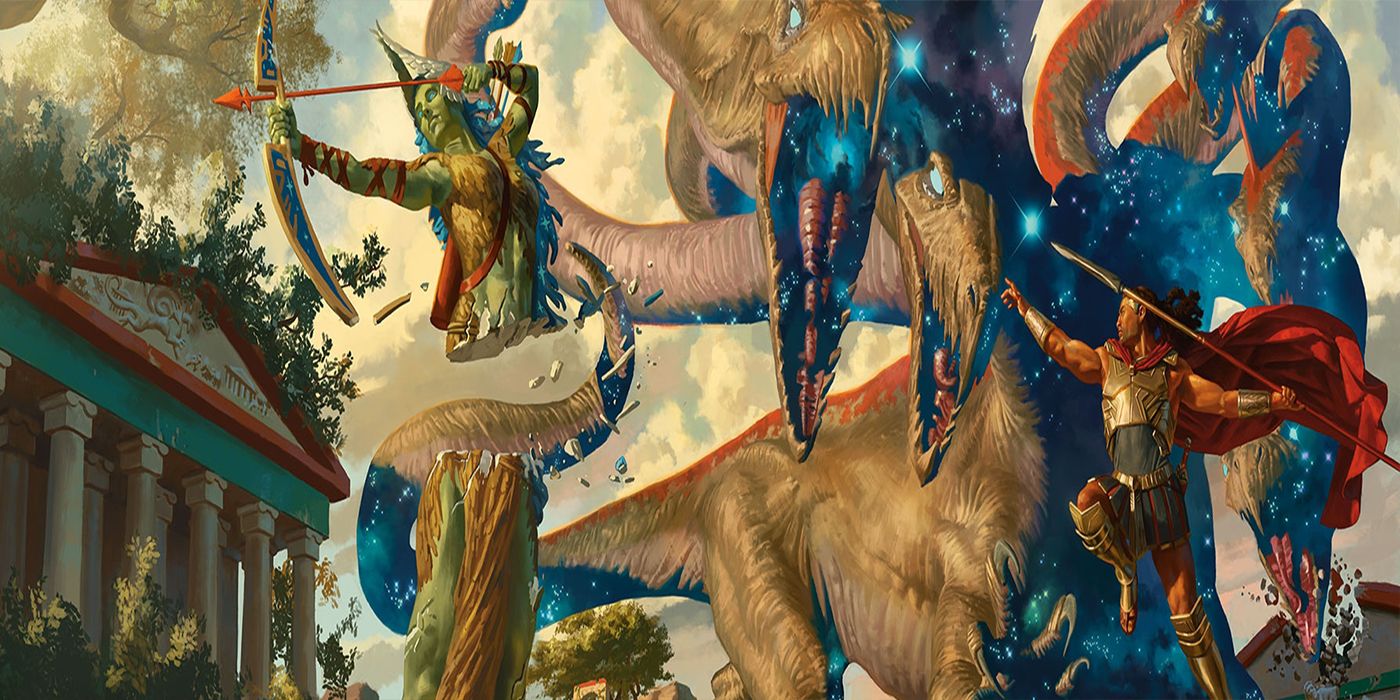
Dungeons and Dragons: Everything You Need To Know About Mythic Odysseys of Theros
Dungeons and Dragons players who want to explore another plane from Magic: The Gathering have some exciting options in the Mythic Odysseys of Theros.Most Paladins are utilized for their support spells, and the Oath of Glory has some impressive ones, like Heroism, Enhance Ability, and Aura of Alacrity. By the time a character of this subclass has reached level 20, they can draw extra power from their epic deeds and choose a bonus action.
15 Cleric: The Forge Domain
Xanathar's Guide to Everything
- Party Role: Defense, Damage
- Main Spells/Abilities: Artisan's Blessing, Soul of the Forge
A Cleric is defined by the Domain that they choose. The class is often the best choice for a healing or support role; however, those who are interested in rolling a Cleric that can act as a tank or weapon master can choose the Forge Domain. The extra AC that comes with a heavy armor proficiency is great for any Cleric, especially a Domain that fights on the front line.
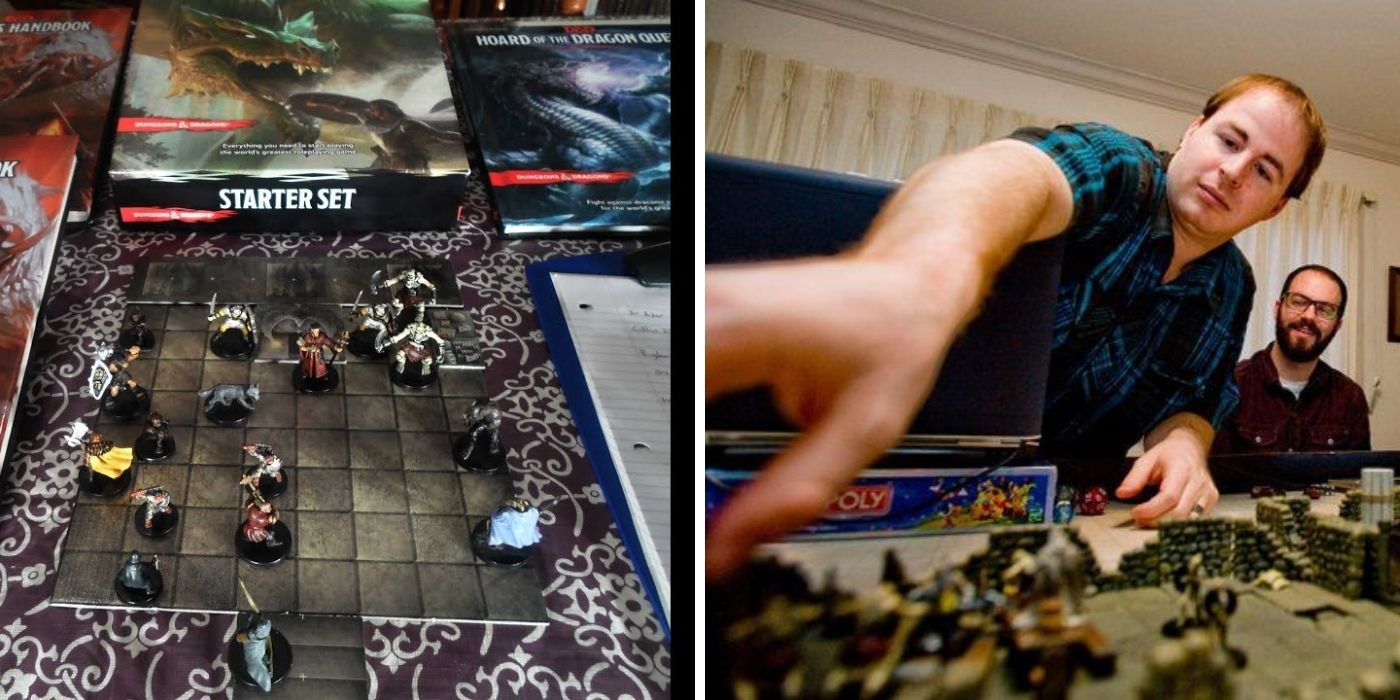
D&D: 10 Things That Players Should Know (So The DM Doesn't Need To)
Your DM has to know a lot, but they shouldn't have to learn everything. These are some things players need to know going into their sessions.Any character that follows the gods of the forge would have powers associated with weapons and armor, and the Forge Domain Cleric exemplifies this in a D&D 5e subclass. Clerics of the Forge Domain learn spells like Searing Smite and Magic Weapon in their first few levels, and they have proficiency with heavy armor and blacksmith's tools. Essentially, these characters are priests who are ready for battle.
14 Monk: Way Of The Long Death
Sword Coast Adventurer's Guide
- Party Role: Damage
- Main Spells/Abilities: Touch of Death
It's not just evil sorcerers that originate in the country of Thay. The region is also home to a monastic order known as the Order of the Long Death, closely aligned with the Red Wizards. Its students and masters study the art of the perfect death with little or no concern for the afterlife or spiritual concerns and are some of the most accomplished killers in Sword Coast history.
Other locations that had monasteries of this Order were the Silver Marches and a small, secret school in Scarsdale deep in northern Faerûn. Both settings are equally isolated and harsh as the Firestep Mountains of Thay.
13 Ranger: Swarmkeeper
Tasha's Cauldron of Everything
- Party Role: Damage and Crowd Control
- Main Spells/Abilities: Calls on a connection with nature to control a swarm.
Although this D&D subclass is often associated with insect swarms, which is one possible build and often one of the most lethal, a Ranger can get creative depending on the environment. A swarm can also be a collection of rocks because of landslides and meteors, or a different kind of animal that moves in a large group, like rabbits.
Swarmkeeper Magic is one of the best perks of this subclass, but it's more about utility than combat. Aside from the damage a swarm of insects can do, the Swarmkeeper also has skills that allow them to manage the battlefield by immobilizing or distracting enemies.
12 Bard: College of Spirits
Van Richten’s Guide to Ravenloft
- Party Role: Healing, Damage
- Main Spells/Abilities: Guiding Whispers, Tales from Beyond
Return to the Gothic side of D&D to discover this unique twist on the Bard class. Bards are one of the most versatile classes to begin with, often chosen for multi-class options. With this subclass, Bards can channel spirits and buff their party's abilities for some extra support. At the 6th level, this subclass starts to learn spells that deal damage and restore hit points.
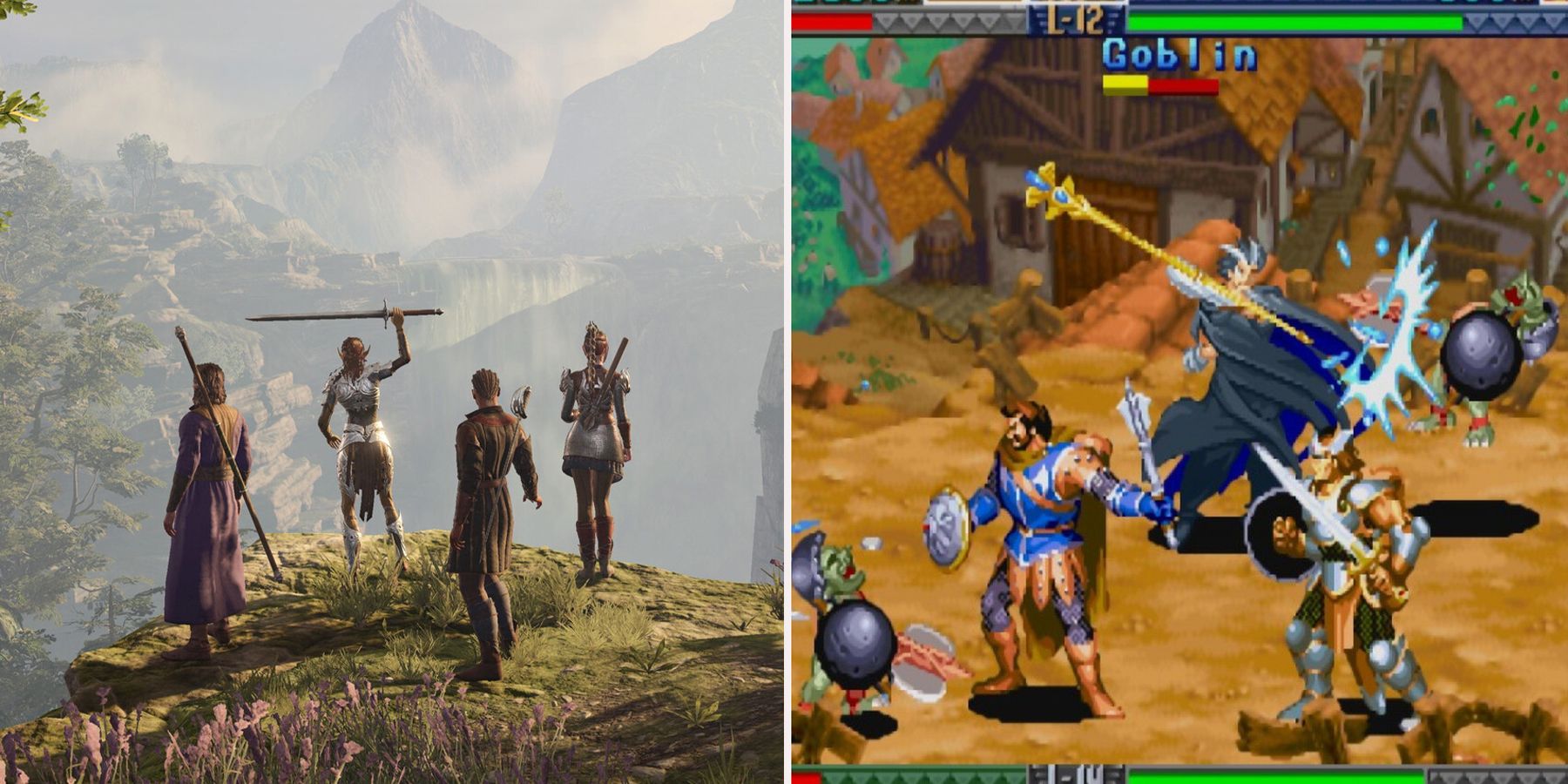
Best Dungeons & Dragons Video Games, Ranked
RPGs and similar genres in the video game world owe their existence to Dungeons & Dragons, and these games embody the franchise well.Like the Cleric's choice of Domain, every Bard's choice of College defines their character. The power to channel spirits adds a wealth of damage to spellcasting abilities. Additionally, players still have low-level support spells for their party, making this one of the best D&D subclasses.
11 Cleric: Arcana Domain
Sword Coast Adventurer's Guide
- Party Role: Damage, Defense, Healing, Support
- Main Spell/Ability: Arcane Abjuration
As if Clerics weren't overpowered enough, here's a D&D subclass that gives them access to a variety of Wizard spells. When a Cleric chooses the Arcana Domain, they become an Arcane Initiate and can learn two cantrips from the Wizard's spell list.
The spells are listed in the Cleric's spellbook and function as Cleric spells. At eighth level, the Wisdom modifier is added to the cantrip's damage. Depending on the gear, the Arcana Domain cleric can take on any party role, and they're also adept at protecting their companions against magic.
10 Fighter: The Rune Knight
Tasha's Cauldron of Everything
- Party Role: Defense or Damage
- Main Spell/Ability: Rune Carver
Usually, the only class that can make their own armor is an Artificer. However, this type of Fighter uses the power of runes to accomplish the same thing, with their unique abilities of Giant Might and Runic Shield. If a Fighter doesn't have the stats to multi-class into an Artificer, this is the best choice in 5e.
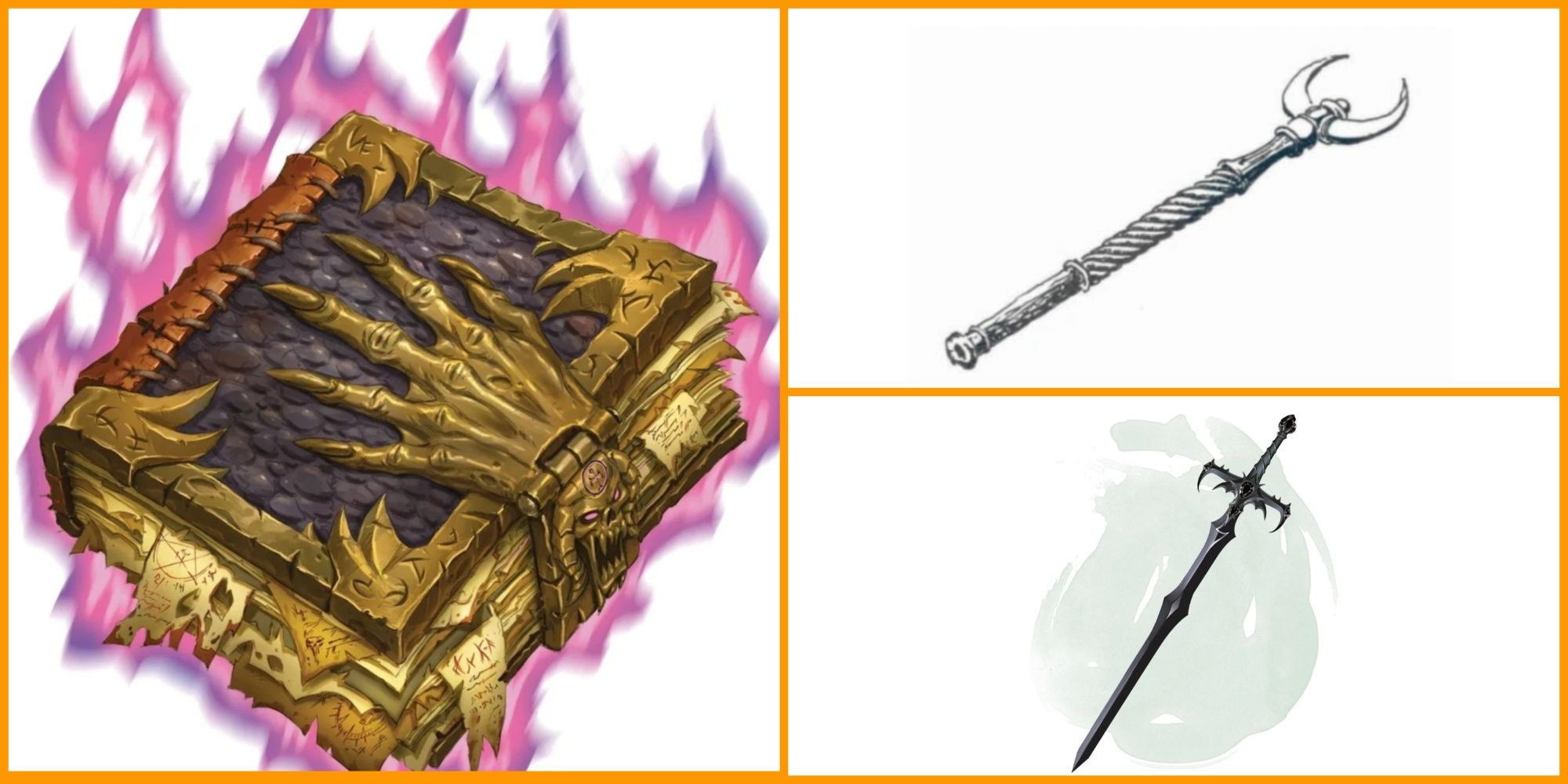
The Most Mysterious Artifacts In Dungeons & Dragons
There are some rather strange and mysterious artifacts in Dungeons & Dragons. Here's a look at some of the most enigmatic.This D&D subclass has six of these runes to choose from as they progress through the leveling process. Each one grants special abilities both to the characters themselves and to their party. Another interesting quirk is that this subclass can also speak the language of Giants, who are masters of rune magic and lore.
9 Druid: Circle Of Spores
Guildmasters' Guide to Ravnica
- Party Role: Healing, Damage
- Main Spells/Abilities: Chill Touch, Symbiotic Entity
This D&D subclass specializes in decay, especially mushrooms, fungi, and spores. A Druid from the Circle of Spores considers the potential for power and life in decay and infestation, and when it comes to persistence and damage, few other forms of life can equal it.
There's more damage than healing in this subclass, with spells like Blight and Contagion featuring prominently in their repertoire. At later levels, these Druids are almost completely immune to any kind of poison, blindness, or fright, making this one of the most overpowered and best 5e subclasses around.
8 Sorcerer: Divine Soul
Tasha's Cauldron of Everything
- Party Role: Damage
- Main Spells/Abilities: Depends on the character's moral alignment, but ranges between defense, damage, and healing options.
Sorcerers don't train to gain their abilities as a Wizard or a Fighter does. A Sorcerer's powers are innate, and any training they do is to hone these abilities as opposed to acquire them. In the case of the Divine Soul, this magic user's natural abilities come from their connection with a divine spirit.
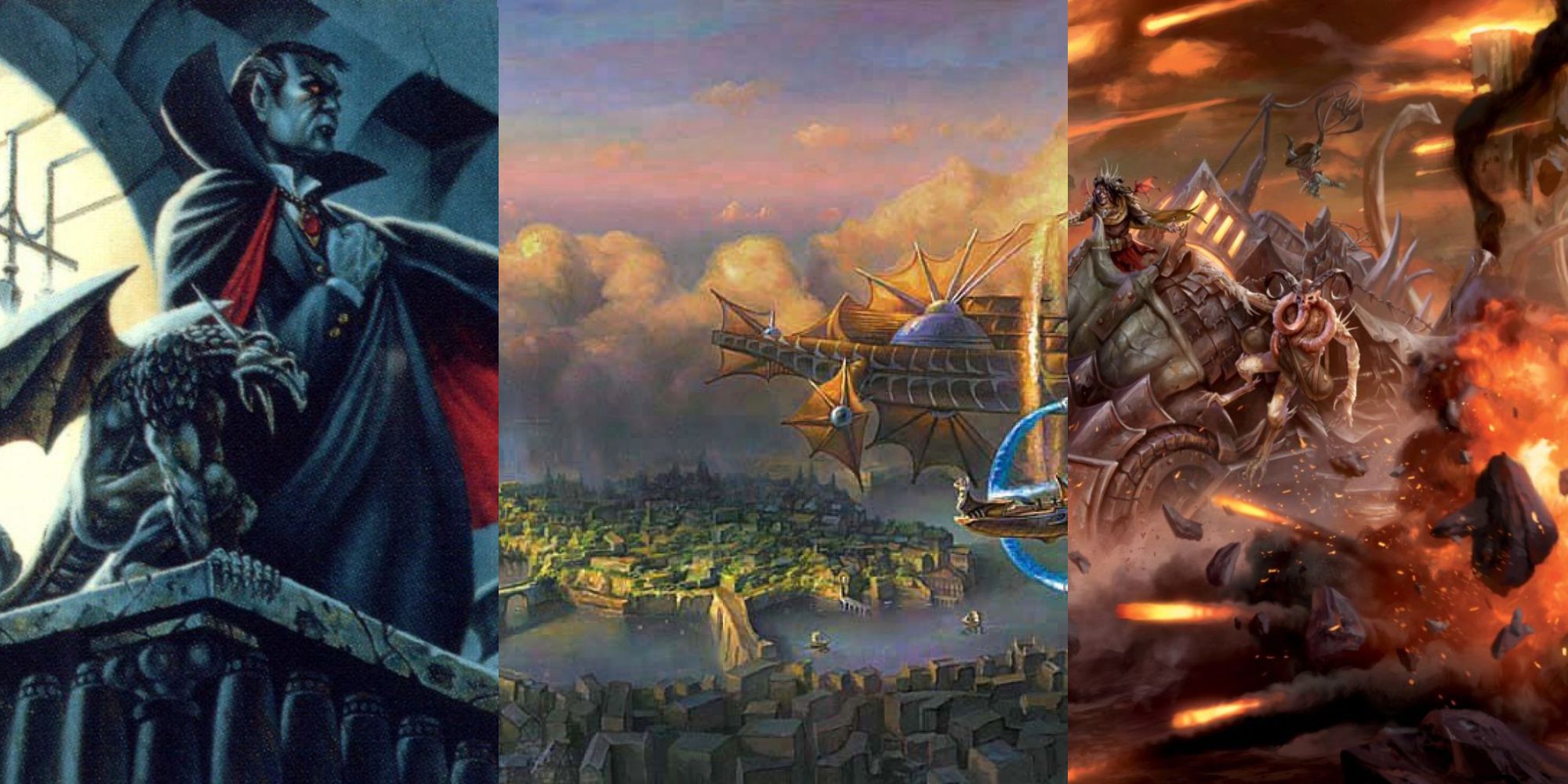
8 Greatest D&D Campaign Settings, Ranked
Dungeons and Dragons is home to some of the greatest fantasy settings. Here are the best ones, ranked.As if the role-playing potential for this kind of class wasn't alluring enough, it includes abilities that are connected to Clerics, like buffs and healing spells. Divine Soul Sorcerers can also choose the nature of their divine soul as good, evil, lawful, chaotic, or neutral, and learn the spells that mesh with that deity's alignment.
7 Paladin: The Oathbreaker
Dungeon Master's Guide
- Party Role: Defense or Damage
- Main Spells/Abilities: Hellish Rebuke, Blight, Bestow Curse
The Dungeon Master's Guide isn't usually a resource that players use unless they're acting as Dungeon Masters. However, for those interested in the lore of a fallen Paladin, it's worth picking up a copy to check out this class. These characters can wield spells like Hellish Rebuke and Inflict Wounds as early as 3rd level.
This D&D subclass is a Paladin who has broken their sacred vows. It's also an option for players who want to try playing a character with an evil alignment. The Dungeon Master might have to consider how this character would fit into the party, which would make this one of the best subclasses in D&D for storytelling.
6 Barbarian: The Path of the Zealot
Xanathar's Guide to Everything
- Party Role: Damage
- Main Spells/Abilities: Divine Fury, Warrior of the Gods
There's a deity for everything in D&D. For this subclass, gods send their adherents into a furious rage. A Barbarian has this ability in the first place, but in the case of the Zealot, it's a power of a divine nature instead of the usual everyday rage. Rage Beyond Death is an ability this 5e subclass gains at advanced levels, allowing them to ignore mortal strikes for a short period.
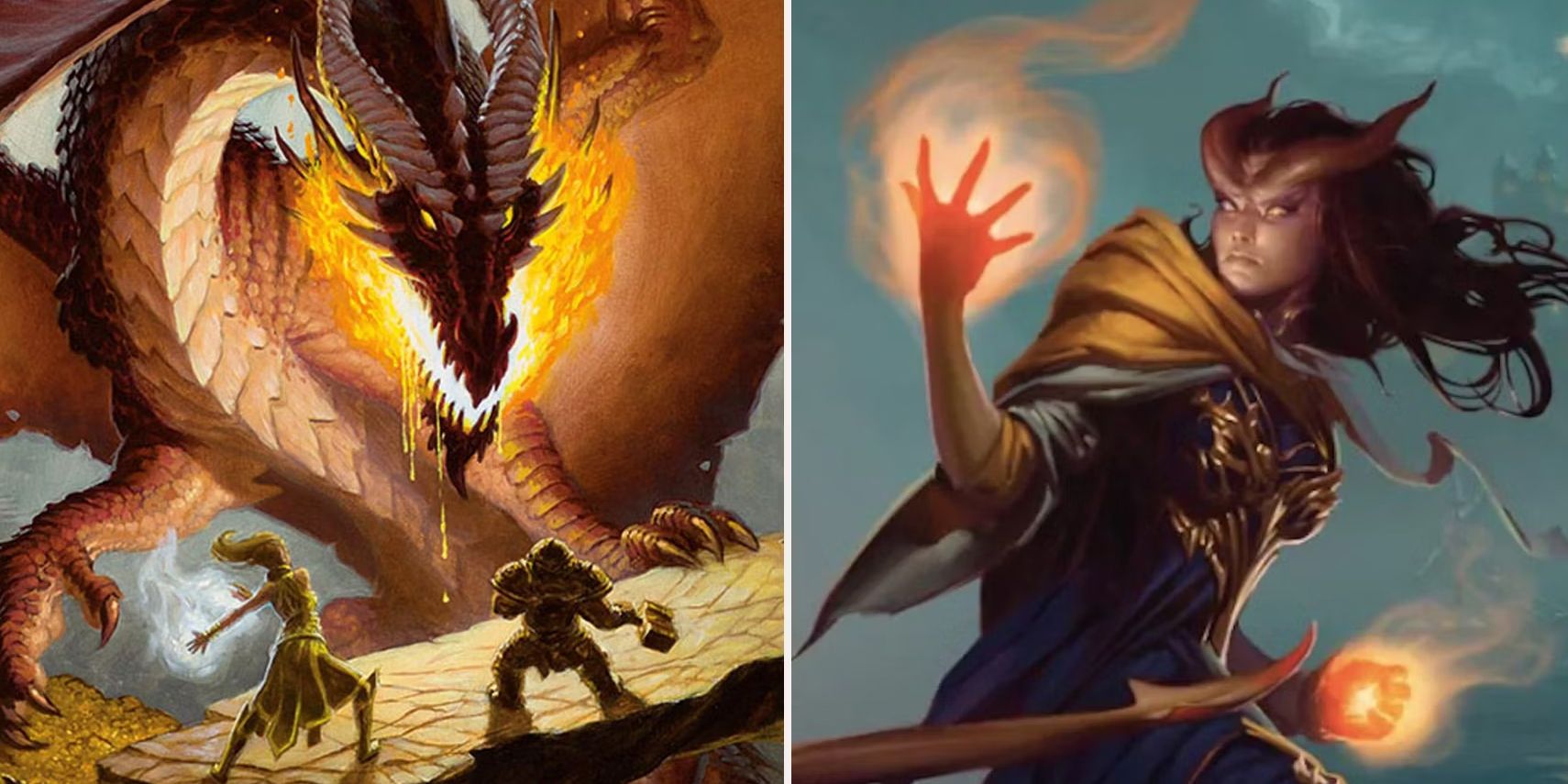
The 32 Best D&D Campaigns Of All Time, Ranked
Sometimes creating a Dungeons & Dragons adventure can be difficult. Those struggling should try these amazing pre-made journeys!A Barbarian can choose from several paths when they reach level 3. The Path of the Zealot immediately gives players the ability to channel divine power into their weapon hits. They can even choose to do either necrotic or radiant damage with each strike, making them one of the best subclasses when it comes to melee damage.
5 Ranger: Horizon Walker Conclave
Xanathar's Guide to Everything
- Party Role: Healing, Damage
- Main Spells/Abilities: Detect Portals, Planar Warrior
The Ranger subclass is known for its ability to move undetected through the wilds. They are talented trackers and survivalists, using their talents to hunt and evade dangerous enemies. The Horizon Walker has expanded their wandering grounds to include other planar realities, and they are often experts when it comes to the denizens of these ethereal realms.
As other Rangers know where to find water or shelter, a Horizon Walker knows where planar portals can be found. Detect Portal is one of the earliest spells they learn, along with Planar Warrior, which allows the user to use energy drawn from the multiverse in their attacks.
4 Monk: Way Of The Sun Soul
Sword Coast Adventurer's Guide
- Party Role: Damage
- Main Spell/Ability: A variety of spells related to Radiant damage.
This Monk subclass is as much a spellcaster as a holy Cleric or Paladin, with similar skills and abilities, and they're just as lethal at range as they are at melee range. They can use their ki power to cast spells, and one of the earliest they learn is Radiant Sun Bolt at level 3, which is similar to the Cleric's Guiding Bolt, and has a range of 30 feet.
The selection of spells gets better from there, and most of them include both Radiant and fire damage. Other spells in this Monk's repertoire include damage-dealing spells like Searing Arc Strike and Searing Sunburst, which are a mix of both AoE and direct damage.
3 Warlock: Hexblade
Xanathar's Guide to Everything
- Party Role: Damage
- Main Spells/Abilities: Branding Smite, Elemental Weapon
This Warlock has aligned themselves with a certain deity known as the Raven Queen, who is known for making the weapons that originate in the Shadowfell. Players who like Warlocks will appreciate this character's extra abilities beyond spellcasting, especially since the 5e subclass deals with some limitations regarding the variety of spells at their disposal. The ability to use some Hexes and spells is for increased AC and gives the character more melee damage ability.
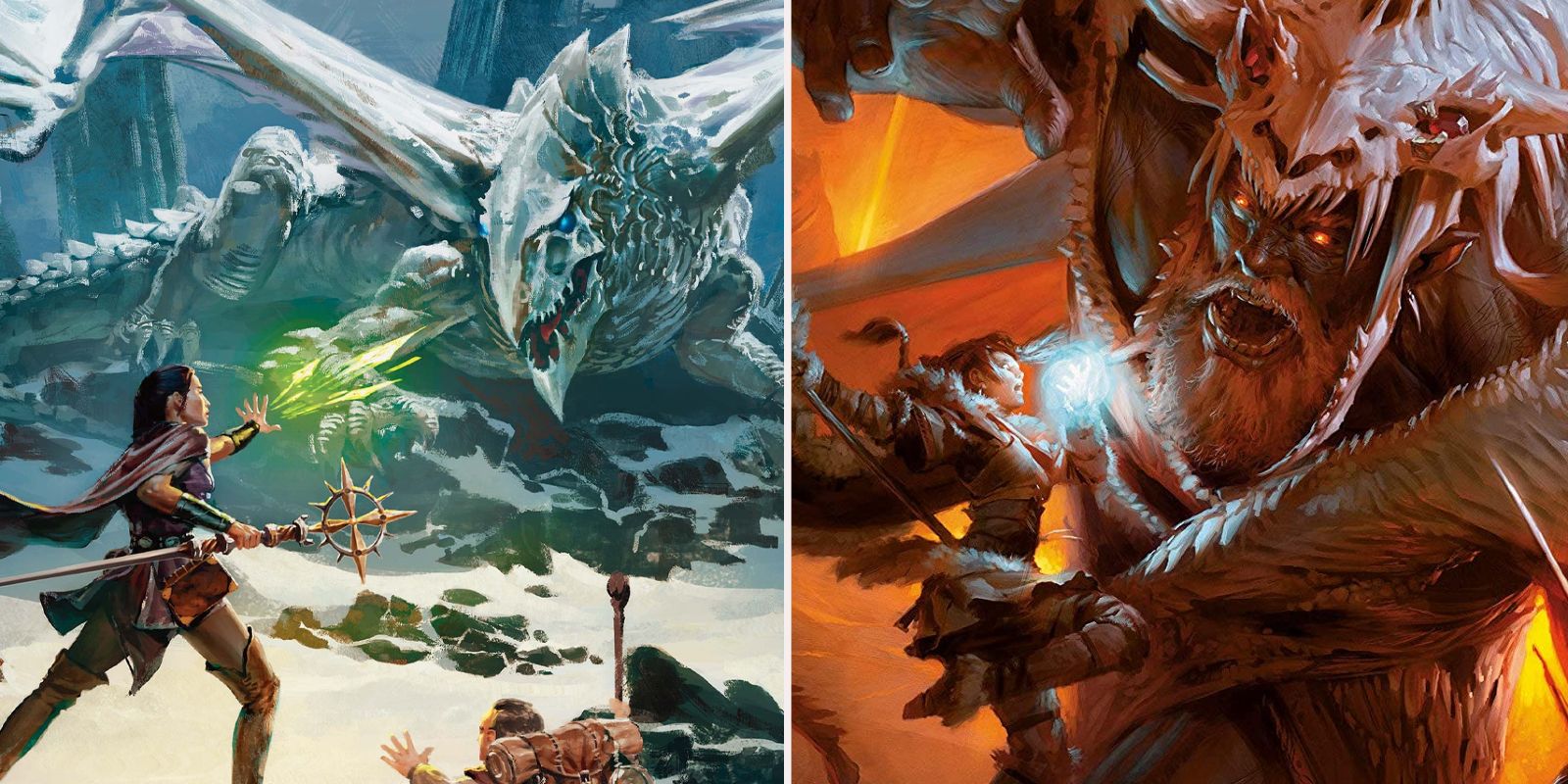
The 25 Most Useful D&D 5e Spells Players Should Have
Here are some helpful Dungeons & Dragons 5e spells that any magic-using player should make use of during their adventures.Hexblades has two unique abilities from the first level: the Hexblade's Curse and the Hex Warrior. The ability to curse any character within 30 feet will come in handy, while the Warrior's benefits include the use of martial weapons and shields. The Hexblade could be the best D&D subclass for spellcasters who want to incorporate Fighter or Rogue elements without multiclassing.
2 Cleric: Death Domain
Dungeon Master's Guide
- Party Role: Damage, Healing
- Main Spells/Abilities: Powers over death and the dead.
The equivalent of this D&D subclass is present in other RPGs in the form of what's often called a Shadow Priest. This is a type of Cleric that has similar powers over the shadowy magic that surrounds the realm beyond the grave. This includes an array of necromantic abilities like Animate Dead and Vampiric Touch.
This Cleric has some limited healing spells and retains their powers of resurrection and Cleric-specific abilities like False Life. However, their powers in this regard are limited, and the party will probably need another dedicated healer.
1 Rogue: Phantom
Tasha's Cauldron of Everything
- Party Role: Damage
- Main Spells/Abilities: Tokens of the Departed, Ghost Walk
A Rogue often walks in the shadow of death, and this subclass gains a connection to the ethereal in the course of their training or work. Eventually, these types of Rogues take on the ethereal powers of the spirits and can tread the planes like ghosts themselves, gaining the ability to utilize Necromantic magic in addition to typical Rogue skills.
A Phantom Rogue can fill several different roles in any party. Wizards, Sorcerers, and other magic users that delve into Necromancy often employ the Phantom as messengers or mercenaries. At higher levels, this subclass even gains powers that include Necrotic damage.
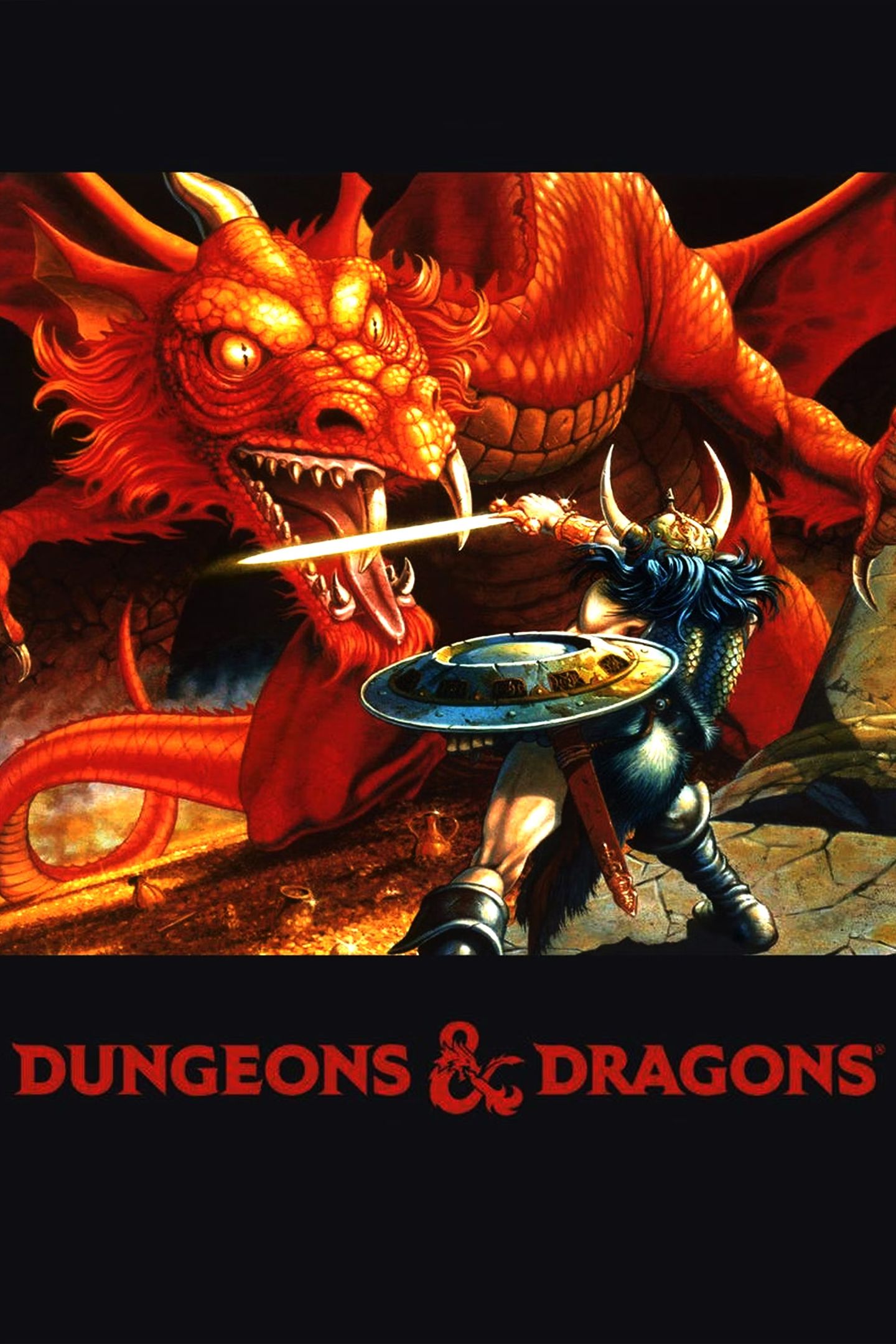
Dungeons & Dragons
- Created by
- E. Gary Gygax , Dave Arneson
- Movie
- Dungeons & Dragons: Honor Among Thieves
- Creation Year
- 1974
- Video Game(s)
- Baldur's Gate , Baldur's Gate 2 , Baldur's Gate 3 , Icewind Dale , Neverwinter Nights , Neverwinter Nights 2 , Neverwinter , Dungeons & Dragons: Dragonshard , Dungeons and Dragons: Dark Alliance

